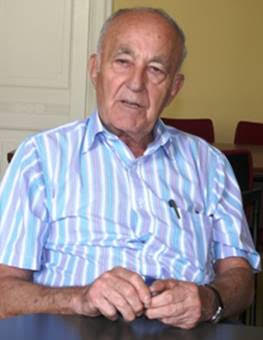
THE VOICE OF INTERNATIONAL LITHUANIA
|
VilNews has its own Google archive! Type a word in the above search box to find any article.
You can also follow us on Facebook. We have two different pages. Click to open and join.
|
Lithuania in the world
- Posted by - (2) Comment
|
|
Text and photos: Aage Myhre
|
|
|
MADHUR ROY waits for me at the Delhi International Airport when I fly in from Mumbai in the late evening. She represents the Ministry of Foreign Affairs, and has been given the responsibility to show me around and introduce me to people I have special interest in meeting during my visit. On the way to the hotel she tells me about the programme. She also talks about her hobbies; filmmaking and singing. During my days in Delhi, she does a very good job, every day from early morning to late evening. A few days later, on the way to the airport, she sings a quiet, melodic song about herself, a song about the little girl from a village up in the mountains far to the north who came to live in the big city. I see tears rolling down her cheeks, and I feel very touched having got to know a person who not only performs her job in a very professional manner, but also dares to show her feelings in such a way. My visit to India got a new dimension after the meeting with Madhur. Thanks a lot!! |
|
|
|
INDIA
India, officially the Republic of India, is a country in South Asia. It is the world’s seventh-largest country by geographical area, the second-most populous country with over 1.18 billion people, and the most populous democracy in the world. Mainland India is bounded by the Indian Ocean on the south, the Arabian Sea on the west, and the Bay of Bengal on the east; and it is bordered by Pakistan to the west, the People's Republic of China, Nepal, and Bhutan to the north; and Bangladesh and Burma to the east. India is in the vicinity of Sri Lanka, and the Maldives in the Indian Ocean, its Andaman and Nicobar Islands are also in the vicinity of the Indonesian island of Sumatra in the Andaman Sea, and in the Andaman Sea India also shares a maritime border with Thailand. India has a coastline of 7,517 kilometres (4,700 mi). |
Home to the ancient Indus Valley Civilisation and a region of historic trade routes and vast empires, the Indian subcontinent was identified with its commercial and cultural wealth for much of its long history. Four major religions, Hinduism, Buddhism, Jainism and Sikhism originated here, while Zoroastrianism, Judaism, Christianity and Islam arrived in the first millennium CE and shaped the region's diverse culture. Gradually annexed by the British East India Company from the early eighteenth century and colonised by the United Kingdom from the mid-nineteenth century, India became an independent nation in 1947 after a struggle for independence that was marked by widespread non-violent resistance.
India is a federal constitutional republic with a parliamentary democracy consisting of 28 states and seven union territories. Apluralistic, multilingual and multiethnic society, India is also home to a diversity of wildlife in a variety of protected habitats. The Indian economy is the world's eleventh largest economy by nominal GDP and the fourth largest by purchasing power parity.
Since the introduction of market-based economic reforms in 1991, India has become one of the fastest growing major economies in the world; however, it still suffers from poverty, illiteracy, corruption, disease, and malnutrition. India is classified as a newly industrialised country and is one of the four BRIC nations. It is a nuclear weapons state and has the third-largest standing armed force in the world, while its military expenditure ranks tenth in the world. It is a founding member of the United Nations, the East Asia Summit, the South Asian Association for Regional Cooperation and the Non-Aligned Movement and a member of the Commonwealth of Nations and the G-20 major economies.
|
|
DELHI (official name: National Capital Territory of Delhi - NCT) is the largest metropolis by area and the second-largest metropolis by population in India. It is the eighth largest metropolis in the world by population with more than 12.25 million inhabitants in the territory and with nearly 22.2 million residents in the National Capital Region urban area The name Delhi is often also used to include some urban areas near the NCT, as well as to refer to New Delhi, the capital of India, which lies within the metropolis. It is the capital of India and its political and cultural centre. Located on the banks of the River Yamuna, Delhi has been continuously inhabited since at least the 6th century BCE. |
|
|
MUMBAI, also known as Bombay is the capital of the Indian state of Maharashtra. It is the most populous city in India, and one of the most populous cities in the world, with a population of approximately 20 million. Along with the neighbouring urban areas, including the cities of Navi Mumbai and Thane, it is one of the most populous urban regions in the world. Mumbai lies on the west coast of India and has a deep natural harbour. Mumbai is also the richest city in India, and has the highest GDP of any city in South or Central Asia.
|
|
|
1
|
|
|
|
||||||||||||
![]() Incredible
business growth
Incredible
business growth

Geeta and Gulu Mirchandani in their beautiful
Mumbai home
During my stay in Mumbai I get one night invited to the home of Geeta and Gulu Mirchandani. Gulu is an old acquaintance who since 1981 has developed and been in the forefront of the electronics giant ONIDA (Mirc Electronics). I consider Gulu one of the masterminds behind the impressive development India's economy has undergone over the last 30 years. He is also one of those behind the initiative 'Mumbai Angels' that provides a unique platform to start-up companies by bringing them face to face with successful entrepreneurs, professionals and executives, also helping with start-up funding. I believe this kind of support and team-work is what brings India quickly forwards in today’s harsh economic climate. Ref. www.mumbaiangels.com
|
|
The Gross Domestic Product (GDP) in India expanded at an annual rate of 8.80 percent in the 2nd quarter of 2010. From 2004 until 2010, India's average quarterly GDP Growth was 8.37 percent reaching an historical high of 10.10 percent in September of 2006 and a record low of 5.50 percent in December of 2004. India's diverse economy encompasses traditional village farming, modern agriculture, handicrafts, a wide range of modern industries, and a multitude of services. Services are the major source of economic growth, accounting for more than half of India's output with less than one third of its labour force. The economy has posted an average growth rate of more than 7% in the decade since 1997, reducing poverty by about 10 percentage points.
|
![]() Incredible
Indian-Lithuanian relations
Incredible
Indian-Lithuanian relations

Professor Lokesh Chandra (85), one of India’s leading experts on Sanskrit and Buddhism
It’s early morning in Delhi. I have been invited to the small, dark office of Professor Lokesh Chandra, one of India’s leading experts on Sanskrit and Buddhism. “The same year I was born, 1927, my father went to London to get a degree in Lithuanian language. He spoke the language fluently, but he never visited Lithuania,” tells the elderly professor, still with his Kashmir coat and cap on despite the outside temperature of close to 300 Celsius.
I soon learn that the professor’s knowledge about the connections between Old Sanskrit and Lithuanian language and ancient cultural ties between India and Lithuania is nothing but amazing. He confirms that there since ancient times have been unique ties between India and Lithuania, not only with regards to language. Also the songs, the medieval cultures and more were extraordinary closely connected to each other.
Here is what he tells me this early morning at his New Delhi office: “The very mention of Lithuanian opens up an image, a vision that gives a people their identity through language. It shows how the darkness of dreams becomes the new embodied hope. My father was stimulated and strengthened in his work on the development of Hindi by the history of Lithuanian language. It has been the eternal continuity of these people; - it rustles something deep in their being. My father felt that we in India share with our distant Lithuanian brothers the silent geography of lost frontiers. Political freedom is inseparable from language.”
And the professor continues with his amazing story: “My father would relate how grandmas in the remote villages narrated folk-tales to eager grandchildren in their Lithuanian language which was despised by the Slavised nobility and punished by the Czarist regime. My father also told me how the Lithuanian daina (songs) were abandoned by the courts, but still continued to live on in the villages, faithfully preserved by the poorest people of Lithuania, guarded by the mothers of the families even during the darkest periods of Lithuania’s history.”
“Such was my first contact with Lithuania, in 1937, at an age of ten,” smiles Professor Chandra.

![]() Sanskrit
and Lithuanian are closely related
Sanskrit
and Lithuanian are closely related
Since the 19th century, when the similarity between Lithuanian and Sanskrit was discovered, Lithuanians have taken a particular pride in their mother tongue as the oldest living Indo-European language. To this day, to some Lithuanians their understanding of their nationality is based on their linguistic identity. It is no surprise then that they proudly quote the French linguist Antoine Meillet, who said, that anyone who wanted to hear old Indo-European should go and listen to a Lithuanian farmer. The 19th century maxim - the older the language the better - is still alive in Lithuania.

Professor Shashiprabha Kumar, and her amazing team of specialists at the Centre for Sanskrit Studies at the Jawaharlal Nehru University in New Delhi, is convinced that there is a very strong connection between Old Sanskrit and Lithuanian
It is a common belief that there is a close similarity between the Lithuanian and Sanskrit languages; Lithuanian being the European language grammatically closest to Sanskrit. It is not difficult to imagine the surprise of the scholarly world when they learned that even in their time somewhere on the Nemunas River lived a people who spoke a language as archaic in many of its forms as Sanskrit itself. Although it was not exactly true that a professor of Sanskrit could talk to Lithuanian farmers in their language, coincidences between these two languages are truly amazing, for example:
SON: Sanskrit sunus - Lithuanian sunus
SHEEP: Sanskrit avis - Lithuanian avis
SOLE: Sanskrit padas - Lithuanian padas
MAN: Sanskrit viras - Lithuanian vyras
SMOKE: Sanskrit dhumas - Lithuanian dumas
These Lihuanian words have not changed their forms for the last five thousand years.
The relationship between Sanskrit and Lithuanian goes even deeper. Take, for example, the Lithuanian word 'daina' that usually is translated as 'song'. The word actually comes from an Indo-European root, meaning ‘to think, to remember, to ponder over’. This root is found in Sanskrit as dhi and dhya. The word also occurs in the Rigveda (ancient Indian sacred collection of Vedic Sanskrit hymns) in the sense of ‘speech reflecting the inner thoughts of man’.
Apart from its Indo-European background as word and term, the ‘daina’ incorporates the idea of the Sun-Goddess who was married to the Moon-God, reminiscent of goddess Surya in the Rigveda.
|
|
OM (also spelled AUM) is a Hindu sacred sound that is considered the greatest of all mantras. The syllable OM is composed of the three sounds a-u-m (in Sanskrit, the vowels a and u combine to become o) and the symbol's threefold nature is central to its meaning. |
|
|
|
Wing Commander Rajinder Chaudhary (ret.), owner of Sue’s Indian Raja in Vilnius.
It is not easy to have a conversation with Raj if you sit down at one of the outdoor tables in front of his Indian restaurant near the Cathedral Square in Vilnius city centre. ‘Everyone’ knows Raj, and many want to shake hands with this extraordinary gentle man when they see him. During the 15 years that have passed since he first came to Lithuania, he has become an outstanding, popular living legend and institution here in this cold country so far away from his childhood home in warm and hospitable India.
Raj was commissioned in the Indian Air Force in 1961, where he served for more than 20 years. He decided to retire in 1983. That same year he was awarded the Vasishat Seva Medal by the President of India. He joined the private sector in India in 1984 and rose to higher management positions with renowned ‘business houses’. In 1993 he became the CEO of a British company for their CIS operations and moved to Moscow. In 1995 he decided to join a Dubai based group’s office in Moscow, as Resident Director.
And, luckily for Lithuania, in 1997 Raj moved to Vilnius and started his own business; a restaurant with the name ‘Sue’s Indian Raja’. In less than three years he had set up a pan-Baltic chain with six other restaurants. His restaurant in Riga was named among the 100 best restaurants in the world.
Raj is married to Lina Skutaite-Chaudhary, a medical doctor who now works as a specialist at a hospital in the United Arabian Emirates. He has two sons, both IT professionals in the United States.
He was the Honorary Consul of India to Lithuania for the period 2007-2010.
Raj is the kind of man who does genuine honour to his country and his people. Lithuania should, for its part, feel honoured having individuals like Raj living and working in this country.
|
- Bookmark :
- Digg
- del.icio.us
- Stumbleupon
- Redit it
- Posted by - (4) Comment
LITHUANIAN SOUTH AFRICAText and photos: Aage MyhreIt is considered that around 90% of the approximately 80,000 Jews living in South Africa are ofLithuanian descent (the so-called Litvaks), which thus constitutes the largest pocket of Litvaksin the world! You are hereby invited to learn more about this unique Jewish community thatstill holds Lithuania alive in their hearts, museums and synagogues. |
Lithuanian footprints
in South Africa
Text and photos: Aage Myhre

The Jewish Museum in Cape Town offers visitors a journey back in time. Most museums do. The striking feature of this museum, however, is that the journey to the past also brings us to a completely different part of our world, from Africa's southern tip to a seemingly modest little country far to the north, to a country where around 90% of South Africa's Jewish population has its roots (there are today about 80,000 Jews in South Africa).
The museum's basement is dominated by a village environment (shtetl) from the late 1800s. A few houses are reconstructed in full scale, and you can clearly see how people lived and co-existed at the time. The village is called Riteve. It was recreated in the museum on the basis of entries made in the 1990s by a group of experts who went from South Africa to Lithuania to find traces of the family of the museum's founder, Mendel Kaplan.
The village is called Rietavas in Lithuanian. It is there to this day, less than a half hour drive from Klaipeda, at the highway direction Kaunas and Vilnius. The Kaplan family emigrated from here in the 1920s, while the village's population was still 90% Jewish. Today, no Jews live in Rietavas.
A stroll among the house-models in the Cape Town museum's basement is like walking around in a part of Lithuania, almost more Lithuanian than Lithuania itself. This impression is becoming no less strong when I discover that the café that is a part of this comprehensive Jewish complex in Cape Town, is also named after the founder's home town in Lithuania, and that the older part of the museum is a replica of a Vilnius synagogue. This synagogue was built in 1863, and was the first ever built in South Africa.
The museum and Café Riteve are just two of the elements of an extensive complex of Jewish-related buildings here in Cape Town's incredibly beautiful botanical garden, so if you first come here, I recommend that you take your time. Worth a visit is the Great Synagogue from 1905, the Gitlin Library (including a large collection of books in Yiddish that the Litvaks brought with them on the long sea voyage from Lithuania to Cape Town), and the Cape Town Holocaust Centre (see below).
Lithuanians dominate the Jewish community in South Africa
Lithuanians dominate the Jewish community in South Africa to an extent seen in no other country. Casino magnate Sol Kerzner (1935 - ), communist leader Joe Slovo (1926 – 1995) and veteran anti-apartheid activist Helen Suzman (1917 – 2009) make an unlikely trio but have in common that they are all of Lithuanian descent.
Like their Lithuanian ancestors, whose political ranks included wealthy capitalists, zealous Zionists, prominent religious scholars and committed communists, South Africa's Litvaks, have spanned the political spectrum. On the left stands Slovo, the former head of the South African Communist Party, who was born in Lithuania in 1926 and came to South Africa at the age of nine. On the right stands Kerzner, a flamboyant businessman who built the famous casino resort Sun City (north of Johannesburg) and founded the entertainment and leisure giant Sun International.
Jewish emigrants from Tsar occupied Lithuania are generally thought of as having fled the persecution and poverty for the safe shores of America. A much less known story is that of the many Litvaks who travelled to South Africa. Many of these migrants came from the Kaunas region (Kovno in Yiddish), but many also came from towns such as Palanga, Panevėžys, Rietavas and Šiauliai.
Many travelled via the Liepāja port in Latvia on ships bound, via the Baltic Sea and (after its opening in 1895) the Kiel Canal shortcut, for English east coast ports. From there, they travelled overland, usually via London, to Southampton to embark for Cape Town.
This movement of people was not accidental: a whole business existed to cater for them, from the ticket agents in Kaunas or Vilnius, to shipping lines such as the Wilson Line shuttling between Liepāja and Hull, to the Poor Jews’ Temporary Shelter in London which housed and orientated many of the trans-migrants, to the Castle Line and the Union Line which specialised in the route to South Africa.
And like any successful movement of people, it became self-perpetuating, as the new South Africans sent home letters, and money, encouraging others to follow suit. The first countrywide Union of South African census in 1911 indicates a population of 46,919 Jews, a majority of whom were Litvaks. By 1921, the Jewish population had risen to 62,103, but with more of a shift in gravity towards the gold-mining and commercial centres of Witwatersrand in the Transvaal area (which accounted for 33,515).
What this means is that a great many of those North Americans and British with Litvak ancestors are likely to have kin in South Africa. There are many good sources for Jewish family history research in Lithuania and prospects of success are often favourable, as long as the place of origin within the country is known or can be identified.
The extraordinary story of Sammy Marks (1843 – 1910) from Taurage

The entrepreneur Samuel Marks was born in the Lithuanian district of Taurage in 1843. He was one of the very first Litvaks to arrive on African shores. He came here via England in 1868 and began his career by hawking cheap jewellery and cutlery in Cape Town. Later he moved on to Kimberley where he went into business with his brother-in-law Isaac Lewis and Jules Porges. Together they formed the French Diamond Mining Company.
Following this, Lewis and Marks decided to relocate to the Eastern Transvaal where they established the African and European Investment Company. This company proceeded to become a major Rand finance house with controlling interests in several gold mines. Mr. Marks had become a leading magnate and one of South Africa’s richest men.
An example of his many success stories is one of the companies he started, theZuid-Afrikaanscheen Oranje Vrystaatsche Mineralen en Mijnbouvereeniging, which became the basis of the town Vereeniging. Marks also developed the Viljoen’s Drift coal mine and encouraged the expansion of the Witbank coalfields.
Sammy Marks was also a close friend and admirer of South Africa’s State President Paul Kruger (who is often called the father of the Afrikaner nation) and a popular figure within the Transvaal business community. It was Marks who advised Kruger to build a railway line from Pretoria to Lorenco Marques. He served as a senator in the Union Parliament from 1910 until his death in 1920 in Johannesburg.
Worth a visit is the Sammy Marks Museum north of Pretoria and Johannesburg. The museum building, a splendid Victorian mansion dating from 1884, was the residence of Marks, whose significant contribution to the industrial, mining and agricultural development of the Zuid-Afrikaansche Republiek has given him an outstanding position in South African history, so very far away from his birthplace in Taurage, Lithuania…
|
Click here to read more about the exceptional history of the Litvaks in South Africa: http://www.jewishvirtuallibrary.org/jsource/vjw/South_Africa.html
|
Some of today’s Litvaks in South Africa
Let me introduce you to some of my good friends in South Africa. Most of them are second and third generation Litvaks (plus one single first-generation Litvak). There is also a small colony of Lithuanians who have moved down here the last 20 years. My conclusion is that Lithuania and the Lithuanian spirit is alive and present, even in modern South Africa.
SAM (SHMUEL) KEREN
BORN IN PABRADE, LITHUANIA, IN 1934. A HOLOCAUST SURVIVOR

Sam's life story is worthy of a screenplay. His autobiographical book, 'Mulik the Zulik', says it all. Sam was the only person of his family able to escape the Holocaust in Lithuania. A Polish neighbour family acted as if he was their son and managed in this way to smuggle him out of Lithuania during the war. The rest of his family was executed. After WWII, Sam managed to get to Switzerland, and later to Israel. But it was South Africa that was to become his new homeland, in the 1960s. Here he has done well in business and private. Sam visits Lithuania and his home-place Pabradė every summer since the 1990s. He likes Lithuania, but is still sceptical of Lithuanians and their involvements in the killing of Jews during the Holocaust. I took the above photo of Sam in his office in downtown Cape Town. On the walls hangs many of the memories from his enormously challenging youth. The image he shows me is of the tombstone he installed on his mother's grave a few years ago. In Pabradė village, Lithuania.
JEANETTE JEGGER
FILM PRODUCER AND DIRECTOR. PREPARING A DOCUMENTARY ABOUT LITVAK LITHUANIA
|
|
Jeanette completed an MA in Film Production at the University of Bristol, UK, in 2000 and, upon returning to South Africa, realised that the only way to make a film was to get out there and do it. And so, with the support of friends and other grassroots filmmakers, she made Krisimesi, also exploring children’s unique perspectives, which has, in its different versions, screened at various international film festivals and won several awards. She teaches film and has a production company with Matthys Mocke. During my meeting with Jeanette she told me much about her so far only visit to Lithuania. She told me about when she came to Kaunas to try to find the house where her ancestors lived, and how nervous the woman who now lives in the house became when Jeanette knocked on the door, and the fantastic three days that followed when she and the woman, a known Lithuanian artist, afterwards sat down in mutual trust and dialogue… |
PROFESSOR MILTON SHAIN
DIRECTOR OF THE ISAAC AND JESSIE KAPLAN CENTRE FOR JEWISH STUDIES, UNIVERSITY OF CAPE TOWN
|
|
|
Professor Shain excuses himself, mildly and courteously, as he welcomes me in shorts this December day. "It's really all in the middle of summer here," he says as he leads me into the facilities he is the head of, here at the “Isaac and Jessie Kaplan Centre for Jewish Studies at the University of Cape Town”. And it is by his crowded desk that I get to know so much more about the amazing relationships between his ancestral homeland, Lithuania, and the intellectual South Africa he represents. So, dear reader, if you want to know more about Jews in South Africa, you should definitely read Milton's latest book “Jews in South Africa”.
RICHARD FREEDMAN
DIRECTOR OF THE SOUTH AFRICAN HOLOCAUST FOUNDATION, CAPE TOWN

Richard meets me at the entrance to the Holocaust Centre in Cape Town. I was expecting a man that would put the most emphasis on the many tragic events of the Holocaust in Lithuania and in Europe in general. Richard is, after all, a Litvak himself. But what he instead emphasizes, is that there are an infinite number of comparison points between the Holocaust in Europe and the apartheid in South Africa. "Whites who look down on blacks, Nazis who look down on Jews, people who think themselves better than others, aren’t they all of the same kind?", he asks…
KIM FEINBERG
THE ‘JEWISH TEA MOTHER’ AND HER RENTLESS FIGHTS AGAINST HIV-AIDS IN SOUTH AFRICA

The Christmas trees are beautifully decorated in the district of Rosebank, Johannesburg, this summer afternoon in December. I am slowly strolling around when I suddenly see an energetic white young lady in the middle of a crowd of black youths. It turns out that she is a genuine Litvak, and that she is the head of the organization 'Tomorrow's Trust', which in recent years has become a leading institution in the fight against AIDS-HIV in South Africa.
Kim is the one who some years ago walked out of the movie ‘Schindler’s List’ filled with a sense of purpose. “I just thought, ‘I have to do something. I spoke to my rabbi and then started my own oral history project,” she explains.
What an amazing person and determination. Her name is Kim Feinberg, soon 50 years old, still young forever.
RUTH RABINOVWITZ
THE LITVAK MEDICAL DOCTOR WHO REPRESENTS THE ZULUS IN THE SOUTH AFRICAN PARLIAMENT

An unlikely Zulu, Ruth Rabinowitz represents the Zulu Inkatha Freedom Party in the South African parliament!
I meet Ruth in the library of the Johannesburg Grace Hotel to talk about her unusual life and political career. And Ruth tells an almost incredible story. About how her Litvak family, many years ago, became close friends with the Zulu king and his family. She tells about her medical background, but first of all, she focuses on the circumstances for Africa's largest tribe, the Zulus, that today includes three million people, almost as many as the number of inhabitants in Lithuania, the country her ancestors came from (if to count only the present, local population of Lithuania, of course)…
THE HONORARY CONSULS OF LITHUANIA TO SOUTH AFRICA
THREE SUCCESSFUL ATTORNEYS - ALL LITVAKS
|
|
|
|
|
RAYMOND JOFFE |
ALAN B. SCHMIEDT |
IVOR FEINBERG |
Here they are. Lithuania's three musketeers in South Africa: Raymond, Alan and Ivor. Three skilled lawyers, all of them genuine Lithuanian Jews. It is these three who make up the front line in terms of current relations between Lithuania and South Africa. It is these three who help facilitate Lithuanians arriving to Africa's southern areas, and they are also the ones constantly informing South Africans about the wonderful country called Lithuania.
They were, some years ago, recommended as consuls by the Lithuanian ambassadors to Israel. Israel? Yes, believe it or not, but the fact is that Lithuania does not have its own ambassador to the country having the largest pocket of Litvaks in the world… The Lithuanian ambassador in Tel Aviv must serve Israel, Cyprus and South Africa altogether. But then, in turn, the ambassadors we've had so far have done a good job. It was, as an exemplary example, the very capable Lithuanian ambassadors Romas Misiunas and Alfonsas Eidintas who recommended these three smart guys we today are naming Lithuania's three musketeers in South Africa.
I have had the pleasure of meeting all three of them several times, both here in Lithuania and in South Africa, and I know that they all burn for stronger ties between our two countries. But I've also heard them talk about how sad it was to experience the Lithuanian Constitutional Court rule that Lithuanian citizens around the globe could no longer be registered as Dual Citizens. They feel, as I do, that it is terribly sad to see nowadays Lithuania burn bridges instead of seeking renewed contact with its fantastic diasporas around the world. In this aspect, sadly, every day that passes is a day lost…

|
|
|
The impressions from the Jewish Museum in Cape Town were as glued to my memory. So in August last year I decided to visit Rietavas, the village the Kaplan family emigrated from almost 100 years ago. I had expected to find proud traces of the family; a museum, a memorial, or maybe even something more sophisticated… But I got terribly disappointed. What struck me, then and there, was that this was almost like coming to Salzburg without seeing Mozart mentioned at all...
What a shame. I took some pictures and went from there with bowed head. Mendel Kaplan, by far the wealthiest and certainly one of the wisest Lithuanians ever, was not mentioned with a single word or symbol in the very home village of his own family...
When I came back to Vilnius from Rietavas that August evening, I sent my photos and comments to Dr. Kaplan in Cape Town. This is what he replied a few days later:
|
Dear Mr Myhre, I thank you for your correspondence on Riteve and your complimentary remarks about our family. When President Landsbergis was surrounded by tanks and holed up in parliament I visited him with my wife and friends in the building and established a very warm relationship. I hope he is still well and I remember the fact that his wife was responsible for saving a number of Jews during the Second World War. Yours sincerely
|
Mendel Kaplan (1936-2009) died of a stroke three months after he sent me the above message. In the obituaries that followed, leading Jews stated that Dr. Kaplan was a man who could be termed “the father of the South African Jewish community.” They wrote that he had served as a leadership capacity in several Jewish organisations, that he was involved in the establishment of the South African Jewish Museum in Cape Town and was also one of the first founders of the ‘City of David Archaeological Excavation Project’ in Israel.
Born in Cape Town, Dr. Kaplan had qualified both in law and with an MBA, survived by his wife, four children and grandchildren.
I never met Mendel Kaplan face to face, but I was told that there had been much for him to celebrate in his 73 years of living: The steel company Cape Gate had been transformed from a modest business selling products like wrought iron and garden benches into a vast conglomerate producing its own steel; becoming one of the largest privately owned companies in South Africa, an expansion largely orchestrated by Mendel and his brother Robert.
Dr. Mendel Kaplan, a world leading Litvak philanthropist, lawyer, writer and business magnate passed away just four months ago. His ties to and care for Lithuania were strong and impressive. Isn’t it time for Lithuania to offer a proper response?
|
|
|
|
Rietavas at the time Mendel Kaplan's parents lived here (around 1900).
|
Old wooden buildings in today’s Rietavas (August 2009). |
|
|
|
If to compare with the more than 70,000 Litvaks living in South Africa, the numbers of Lithuanian expatriates of today are very modest. But there are a few of them, and I want to tell you all a little bit about Jadvyga Kazlauskiene from the village Vievis between Vilnius and Kaunas. Jadvyga emigrated to South Africa mid 1990s with her daughter, now 20 years old. She started her career down under as a waitress in a Johannesburg restaurant, but began gradually to climb up the career ladder after she came in contact with the property industry in South Africa's main city and most densely populated area.

My personal impression is that Jadvyga's success started the day she met her current manager and boss, property queen Wendy Machanik (along-standing with Jadvyga in the above photo). Wendy is an amazing Litvak with phenomenal successes within real estate brokerage in the Johannesburg area for many years (hi Wendy, are the pictures still hanging there, in correct positions?).
Last time I saw Jadvyga and her family was at her home village Vievis, here in Lithuania, on a very cold winter day just a few weeks ago, when they all came here to bring their beloved mother to her final rest. The contrast between warm Johannesburg and freezing Lithuania must have been enormous. When the funeral was over, I thought that now one more link between Lithuania and South Africa had been cut. How often will Jadvyga come back up north now when her mother is gone?
But maybe there is something we can do to keep the ties and connections alive, all of us who love both Lithuania and South Africa? Please feel free to write me with your suggestions and ideas…
Aage Myhre
|
VilNews The "VilNews" e-mails from Vilnius International Club (VIC) reach around 1000 recipients worldwide, providing Lithuania-related news, articles and general information to expatriates and the diasporas. Since its founding in 2001, VIC has been a leading non-profit organisation and has created a dynamic forum for people from many nations. The club's mission is to support and encourage cultural, historic and economic vitality - in the capital city of Vilnius and in the outstandingly historic yet contemporary and cosmopolitan nation of Lithuania. Expatriates join the Lithuanian community in furthering diplomatic, business and cultural links, fulfilling VIC's mission through fellowship, monthly meetings and occasional charitable programmes. Please feel free to forward our VilNews to your contacts around the globe, and let us know if you have friends or colleagues wishing to be included on our e-mailing list! |
|
|
|
|
© VilNews
|
- Bookmark :
- Digg
- del.icio.us
- Stumbleupon
- Redit it
- Posted by - (1) Comment

USA and the relationship between the Lithuanian-Americans and their homeland was substantially covered in our
VilNews editions during April and May 2012. Feedback from you, dear readers, is still wanted!
Click on the READ buttons below to access the articles:
1 |
 |
Healing the wounds between
|
| 1.1 |  |
“I am very pleased to see this intra-Lithuanian forum open up and give vent to these prejudices we have about each other” |
2 |
 |
The President and the World-Lithuanians on collision course? |
3 |
 |
A native American
|
| 3.1 |  |
“There are significant cultural differences between LT-Americans and Lithuanians that grew up in the Soviet Lithuania” |
| 3.2 |  |
“My impression is that many of us Lithuanian-Americans have thought about the possibility of retiring in Lithuania” |
4 |
 |
The Knights of Lithuania keep on fighting |
5 |
 |
Lithuanian ‘egg art’ on the Martha Stewart Show |
6 |
 |
Hordes of Lithuanians came to Pennsylvania to work in coal mines |
7 |
 |
Son of a Lithuanian coal miner |
8 |
 |
Easter and more –
|
9 |
 |
We will never forget or underestimate the role of Lithuanian Americans in our struggle for independence |
10 |
 |
Alexander & Ruth Bielaski
|
10 |
 |
TIME 1951: "The most invulnerable, most unfirable, most feared and most admired career woman in the U.S. Government." |
11 |
 |
Cultivating Lithuanian
|
12 |
 |
LT-American filmmaker
|
13 |
 |
Vanda’s story:
|
14 |
 |
Chicago 26 – 28 April:
|
15 |
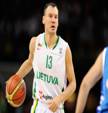 |
LT sportsmen in USA |
16 |
 |
Lithuanian-American Johnny Podres (1932-2008):
|
17 |
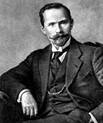 |
Antanas Smetona:
|
18 |
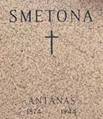 |
No flowers for Smetona |
19 |
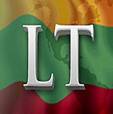 |
US-Lithuanian
|
20 |
 |
Would you like to join me to the Lithuanian Cultural Garden in Cleveland? |
21 |
 |
A visit to our Homeland
|
22 |
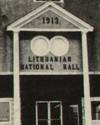 |
Saluting the Lithuanians of Brockton, Massachusetts |
23 |
 |
Boston, Massachusetts,
|
24 |
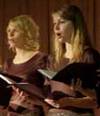 |
Boston Lithuanian Cultural "Subatvakaris" - 50 years |
25 |
 |
US-Lithuanian Jews
|
26 |
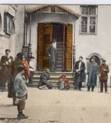 |
“Why do you love
|
27 |
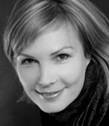 |
Ona Šimaitė:
|
28 |
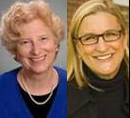 |
Rūta Šepetys and
|
29 |
 |
What defines Lithuania?
|
30 |
 |
How Chicago became
|
| 30.1 | 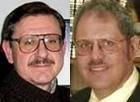 |
As vast as the waves of Lithuanian immigrants who crossed the ocean to start new lives thousands of miles from their native land |
31 |
 |
No LT leaders called
|
32 |
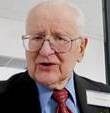 |
Sending e-mail to LT is like sending it to the black hole of the universe |
33 |
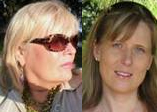 |
Should there be gay
|
34 |
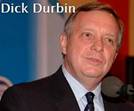 |
Global Baltic ‘family
|
35 |
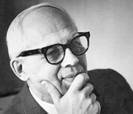 |
Nazi – not Nazi? |
36 |
 |
Juozas Ambrazevicius-
|
37 |
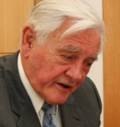 |
Good morning,
|
38 |
 |
U.S.-Nordic-Baltic cooperation |
39 |
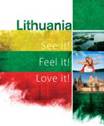 |
Message to all U.S.-Lithuanians:
|
- Bookmark :
- Digg
- del.icio.us
- Stumbleupon
- Redit it
- Posted by - (0) Comment
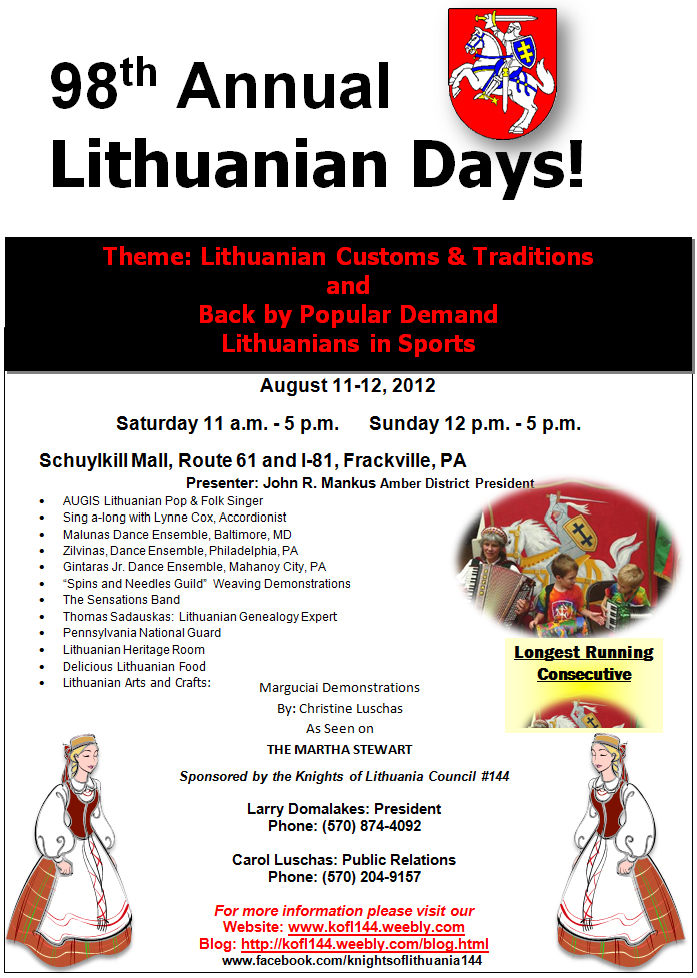
- Bookmark :
- Digg
- del.icio.us
- Stumbleupon
- Redit it

The annual Lithuanian mass and picnic, was held in Putnam, Connecticut, United States on Sunday, July 22nd, 2012.
The event was held at the grounds of the Sisters of the Immaculate Conception Convent, a beautiful field, with trees and a stone wall forming a perimeter. The day started off with celebration of Catholic mass, in Lithuanian. After the mass there were all sorts of Lithuanian food and beverages; Saltbarsciai, kugelis, chicken dinner, cabbage, Lithuanian Kielbasa, and the Lithuanian beverage gira, to name a few. The sisters wonderful breads sold out fast, they are so popular. Then, there were vendors in the outdoor area, selling Lithuanian T shirts, music, books, jewelry, folk art, and many other items. There were MANY picnic tables, and people also bring their own picnic food as well. Lithuanians travelled from all over the Northeast to come to the event.
Letter and pictures: Dana Petkaityte
Hello Aage,
The picnic was wonderful! It was on the grounds of the Sisters of the Immaculate Conception (convent). The day started with a Catholic mass celebrated outside, by three Lithuanian priests. The activities began after mass. The sisters sold their famous bread (duona), either rye or raisin bread was available. It always sells out quickly.
There was music playing over the sound system. Most was recorded music, and some music and song was live. The young people from Camp Neringa (a Lithuanian-American summer camp located in the state of Vermont) performed Lithuanian songs and dances in traditional folk costume.
There was an area with vendors, selling Lithuanian related items. Such things included clothing, books, music, and amber jewelry. I purchased a tank top (shirt) to put on my dog "Kola". She is a German shepherd (Vokieciu aviganis, or "vilkas"). I thought it was appropriate that she should have a shirt with the "Gelezinis vilkas" on it! Some other people brought their dogs, too. There was even a pony for children to ride!
Many people walked into the wooded area on the grounds, to visit what is known as Father Yla's castle. It is a castle, I believe in the spirit of Mindaugas, built by Lithuanians in the 1950s, under the supervision of Father Yla. My own father, I'm proud to say, is one of the people who helped to build the castle. I took some pictures of it this year, but I also have some other ones from last year. I will send them in the 4th email. There were some young ladies doing some sort of presentation about the castle and Lithuanian history, but I'm sorry to say I missed that presentation. They wore 16th century style costumes.
Lastly, there was the food! There was all sorts of food to be eaten; Kugelis, rugstus piena; sausage with bread, potato and sauerkraut; saltibarsciai; chicken with carrots, peas and rice; gira to drink, and pastry and ice cream for dessert. There were also "hot dogs" for the American taste. It was all very delicious!



One of my favorite attractions is a hand built, stone castle you can visit that is on the grounds. It's known as Father Yla's castle. It's built in the spirit of castles that exist in Lithuania, and dedicated to Mindaugas. I'm proud to say that my father was one of many people who helped to build it, I believe in the 1950s.



- Bookmark :
- Digg
- del.icio.us
- Stumbleupon
- Redit it
- Posted by - (2) Comment
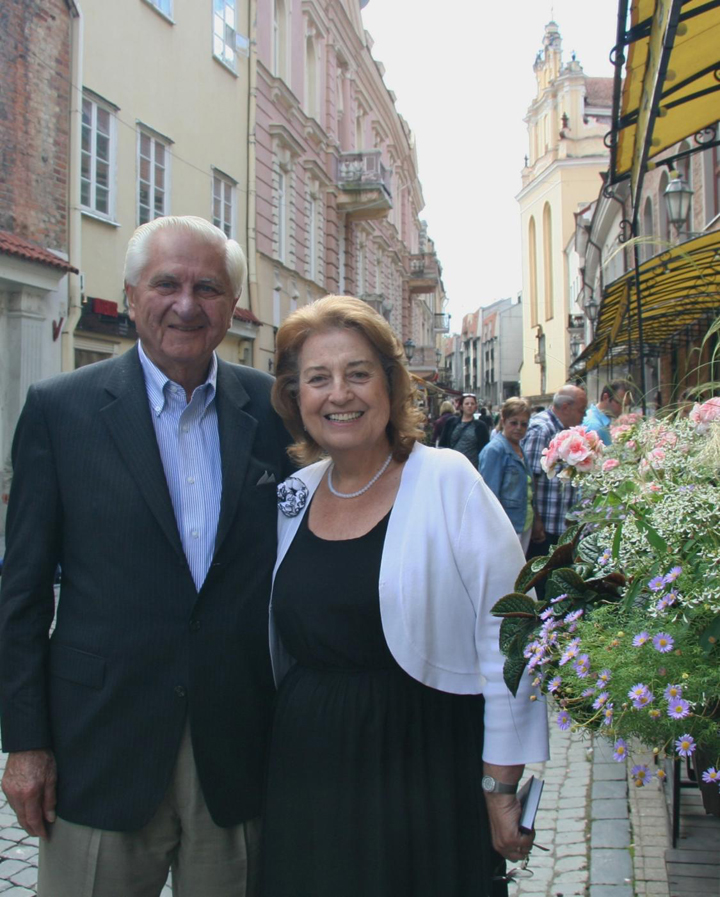
JULY 2012: Regina Narusiene leaves the position as President of the World Lithuanian Community now in August.
Here with her husband Bernard in Vilnius’ charming, bustling Pilies gatve on a beautiful July Sunday morning.
International Lithuania
needs new blood!
Text & photos: Aage Myhre, editor-in-chief
aage.myhre@VilNews.com
“We need new enthusiasts, young people in our worldwide organization, the World Lithuanian Community (WLC). We need Lithuanians, wherever in the world they live, to participate more actively in the maintenance and development of the Lithuanian identity and heritage.”
I wander through beautiful Vilnius Old Town with Regina Narusiene and her husband Bernard, both of them successful Chicago attorneys, this sunny July morning.
We hear voices in all languages, laughter, sounds. It smells of food from all world corners around us. Vilnius has become a hugely popular destination for tourists from all over the globe. I think back on how this street looked 22 years ago, when I came here for the first time. The pictures above and below are from the same street, one taken now in warm July 2012, one taken in November 1990 when coal was still dumped on the sidewalks from the horse-drawn carriages.
The lady I walk with, Regina Narusiene, has been President of the World Lithuanian Community (WLC) since 2006. Before that she led the Lithuanian American Community Inc. (LAC) for six years and then was the president of the Board of Directors of that Community for another 6 years. Now she has finished her second term for WLC and will leave the organization in a few days, at a meeting here in Vilnius starting 6th of August, and she is concerned that the recruitment to international Lithuania has become insufficient.
For six years she has lived a busy double life. Through part of the year, she stays with husband and family in a small village 100 km northwest of Chicago, but it’s not usual to see her for long periods at her home in Vilnius, working intensely on behalf of ‘the international Lithuania’ – this nation outside the nation that includes about almost as many Lithuanians as the country’s resident population.
WLC is now suffering from what is commonly known as an "ageing population" even if there in recent times has been some amazing enthusiasm from "second, third and fourth generation Lithuanians”, not least here in VilNews. An input of new members and enthusiasts is, however, vital to ensure the long-term continuity of this important Lithuanian tradition and movement around the world. WLC needs YOU!
If you've previously taken part in other forms of organisations you'll have a good head start. Naturally, if you've been active in Lithuanian groups or institutions WLC would particularly like to hear from you. But what if you are a complete beginner? Don't worry, you'll still be made very welcome. Don't let the apparent complexity of what this organization does put you off!
I have agreed with Regina that she will be quick to answer everyone who writes her with questions, expressing any sort of readiness to participate in the works of international Lithuania.
So please do not wait, write her an email as soon as you can. Her email address is rbnar213@gmail.com
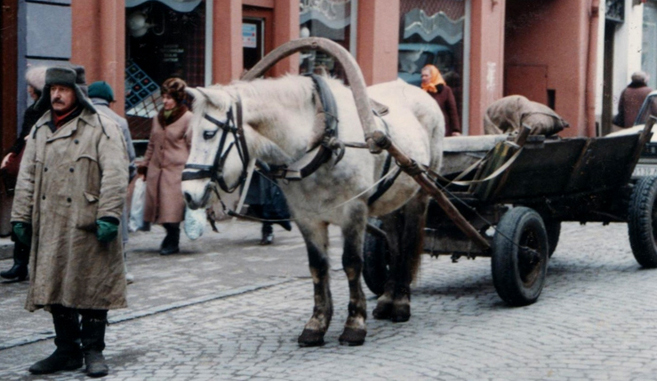
November 1990, my first visit to Vilnius: Delivery of coal to properties in Pilies g. right in the centre of the city. With horses. People pick it up in burlap sacks. Other times, the horse driver is simply shovelling the coal out on the sidewalk in front of the buildings on his ordering list.
Dual citizenship
These two words have come to represent Regina's premier of the heart since she took over as leader of WLC in 2006, the same year that Lithuania's Constitutional Court ruled that the country's Constitution had to be interpreted in such a way that individuals with citizenship of another country should not be allowed to have and keep Lithuania’s citizenship as well.
“The first few months after the court had made its terrible decision, at first I received almost 100 angry letters every day from Lithuanians and their descendants from around the world. They felt that the mother country had disowned them, cutting ties with them and that their efforts and desires to be citizens of Lithuania were not welcomed or respected. They felt that the mother country wanted to punish those who had emigrated, whether this occurred against the background of war, persecution or for economic reasons.”
Regina is herself a lawyer, with over 50 years legal practise in Illinois with her husband Bernard, litigating all types of court cases. Still, the ruling of the Lithuanian Constitutional Court has surprised her. She strongly argues that Lithuanian citizenship for those of Lithuanian descent is an inalienable constitutional birth right and that the government may not arbitrarily take it away.
"I maintain that people of Lithuanian heritage, who were born in Lithuania and have Lithuanian citizenship, have an inviolate birth right to citizenship. Lithuania cannot deprive them of this birth right. That right is guaranteed by the Constitution, but somehow that Constitutional right has been ignored. In my opinion, depriving Lithuanian citizenship to Lithuanians living abroad is against the best interests of Lithuania," she says, convinced that Lithuanians living abroad worldwide should be welcomed to participate in their motherland’s future through Lithuanian citizenship. The most valuable asset of a nation has is its people. When a substantial part of its people are rejected the nation dwindles. It self destructs.
She proceeds to tell me that the WLC laboured to supersede the decision statutorily, but that Presidents Adamkus and Grybauskaite declined to approve Parliament’s pro dual citizenship statutory enactments. Finally Lithuania did on 2 December 2010 enacted a new citizenship law, which allows Lithuanians citizens and their descendants to preserve their Lithuanian citizenship if they emigrated before 11 March 1990. This new legislation prohibits dual citizenship for all those who emigrated after the reestablishment of Lithuania’s independence on 11 March1990, with the exception for those who received another country’s citizenship between January l, 2003 and November 16, 2006, the date the Constitutional Court decision became effective. The ruling is not applied retroactively, only prospectively. The new citizenship law becomes effective on 1 April 2011. The World Lithuanian Community takes the position that it is incorrect to take away the Lithuanian citizenship from Lithuanian descent people and their descendants that was acquired by birth. The Community does not support an unrestricted dual citizenship Constitutional amendment.
Lithuania needs a new global strategy
In 1994 Regina Narusiene was elected President of LAC (Lithuanian American Community Inc.). She held this
position through two terms, until 2000, then she served as chairman of the LAC Board of directors for two terms until 2006, when she was elected President of the WLC. During the more than 20 years that have
passed since Lithuania regained its freedom, she has made tireless efforts for her homeland. She spearheaded the drive in the United States for the admission of Lithuania into NATO from January 6, 1994 until its official admission into NATO on 29 March 2004. She has served as an advisor on various matters to most of the Prime Ministers of Lithuania and extensively contributed her legal talents with respect to the printing and issuance of the Lithuanian currency - Litai. She is a founding member and continues to serve as a member of the Lithuanian Royal Palace Foundation.
She feels that she has always been personally well received in Lithuania.
“Recently however, I've heard some in Lithuania say that Lithuania does not need or want our help. Still I see
significant reluctance to improve the country's legal systems. It seems that some of the country's leaders
simply are not ready to or interested in implementing urgently needed reforms. I am saddened to see the public’s perception that rule of law is still not working effectively in Lithuania." Regina sighs a little deflated
when she shares those thoughts with me.
Towards the end of the conversation I ask her to express some thoughts on what it takes to get Lithuania to
grow stronger and better over the years to come. I'll let her words finish my little report from our talk:
"Let me first say that it is deeply tragic to see so many young, talented and beautiful people leave this country.
Some say that it is now no longer talk of emigration, but evacuation. It is therefore obvious that much more must be done to pave the way for good jobs and opportunities for the country's younger population. But it is
also my opinion that we need a shift in mindset among some of the country's leaders.”
“Last but not least, I yearn to see far more of the population, young and old, engaged in voluntary public oriented organizations and activities. That is exactly what democracy for a large part is about, and it does not take much. Lithuania's people should begin to take such initiatives themselves. A good, democratic society
consists of people who give of themselves to help each other. Lithuania has unfortunately still a long way to go in this respect.”
“I will conclude by saying that it is important for the nation to maintain good relations with all
Lithuanians, and their descendants, now living in other countries.”
“Lithuania needs a new global strategy, and we in the ‘Lithuanian World Community’ should do our utmost to contribute to such a strategy.
Lithuania has an enormously large group of smart Lithuanians and good hearts outside the country,
and it is important that Lithuania invite to dialogue with them and seek their support and input to promote a better future for Lithuania, the country we ALL love."
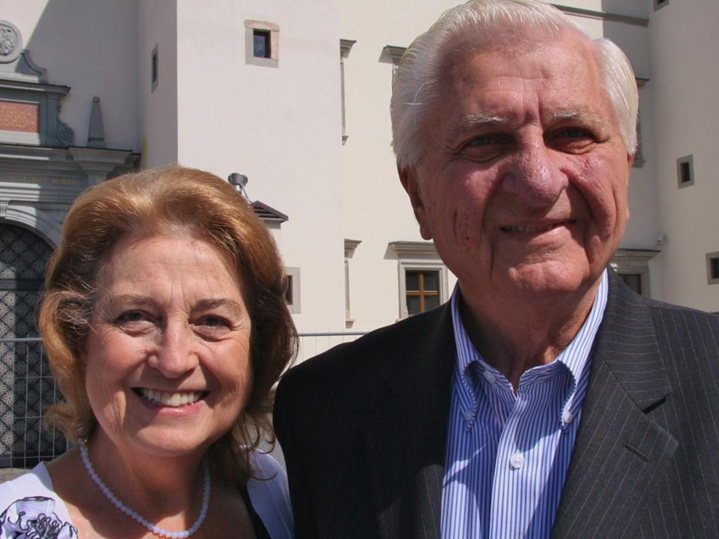
- Bookmark :
- Digg
- del.icio.us
- Stumbleupon
- Redit it
- Posted by - (0) Comment
The Lithuanian World Community (Lithuanian: Pasaulio lietuvių bendruomenė or PLB) is a non-governmental and non-profit organization established in 1949 that unifies Lithuanian communities abroad. The Constitution of the Lithuanian World Community declares that it consists of all Lithuanians living abroad. The Community is active in 36 countries, including representation in Lithuania.
On February 7, 1932 a fund to support Lithuanians in foreign countries was established in Lithuania, making one of the first attempts to maintain closer ties between the Lithuanian diaspora and Lithuania. Three years later the first Lithuanian World Congress was held in Kaunas, which established the Lithuanian World Union. The mission of the Lithuanian World Union, also drafted during the Congress, called for a cultural and economic union of Lithuanians in different countries. However World War II and Lithuania's occupation interrupted the work. Many educated Lithuanians fled to western countries, hoping to avoid approaching Soviet repressions. In 1946 the Lithuanian community in Germany established the Lithuanian Deportees Community, which aimed at consolidating and helping Lithuanians in Germany. In 1949 Lithuania's Supreme Liberation Committee (Lithuanian: Vyriausiasis Lietuvos išlaisvinimo komitetas or VLIKas), established in 1943, delivered the Lithuanian Charter and the Constitutions of the Lithuanian World Community, which solemnly pledged to support and unite all Lithuanians outside Lithuania's borders and promote Lithuanian culture and language abroad. The Lithuanian Charter also proclaimed:
- a nation is a natural community of people;
- a human has birthright to freely profess and promote his nationality;
- a Lithuanian remains a Lithuanian everywhere and always;
- his parents maintained the Lithuanian national consciousness; a Lithuanian relays it to the generations yet unborn, to remain alive;
- a language is the strongest tie to the national community;
- the Lithuanian language is the most precious national honour for a Lithuanian;
- national solidarity is the highest national virtue.
In the 1950s many Lithuanians from Germany moved to the United States, Canada, Australia, South America and other countries, where they established new branches of the Lithuanian Community. 1955 saw elections to the first Lithuanian Community Council in the U.S., which allowed better coordination among the different Lithuanian groups. In 1960 Lithuanians in the U.S., among them future President of Lithuania Valdas Adamkus, collected about 40,000 signatures and petitioned the United States Government to intervene in the ongoing deportations of Lithuanians to Siberia conducted by the Soviets.
In August 2006, President Valdas Adamkus attended the opening ceremony of the World Lithuanian Community's 12th Seimas. Adamkus proposed new goals for the Community as it was facing new challenges which had to be accepted and dealt with because a new wave of Lithuanians had left their homeland since the declaration of independence in 1990.
Structure
The Lithuanian World Community consists of local Lithuanian Communities around the world, currently numbering 36. The highest body is the Seimas of the Lithuanian World Community. Its main goal is to periodically adopt and review the Community's strategy and program. Each country sends at least one representative to the Seimas, which gathers every three years (1958-1997 it gathered every five years). The Seimas also elects the Community Council to deal with day-to-day issues. As of 2009, thirteen Community Councils had been elected:
- 1958 in New York City. Elected Chairmen Jonas Matulionis and Dr. Juozas Sungaila
- 1963 in Toronto (Canada). Elected Chairman Bachunas-Bačiūnas
- 1968 in New York (USA). Chairman Juozas J. Bachunas-Bačiūnas, after his death Stasys Barzdukas
- 1973 in Washington D.C. (USA). Chairman Bronius Nainys
- 1978 in Toronto (Canada). Chairman Vytautas Kamantas
- 1983 in Chicago (USA). Chairman Vytautas Kamantas
- 1988 in Toronto (Canada). Chairman Dr. Vytautas Bieliauskas
- 1992 in Lemont, Illinois (USA). Chairman Bronius Nainys
- 1997 in Vilnius. Chairman Vytautas Kamantas
- 2000 in Vilnius. Chairman Vytautas Kamantas
- 2003 in Vilnius. Chairman Gabrielius Žemkalnis
- 2006 in Vilnius. Chairwoman Regina Narušienė
- 2009 in Vilnius. Chairwoman Regina Narušienė
- 2012 in Vilnius. New chairperson to be elected.
Source: http://en.wikipedia.org/wiki/Lithuanian_World_Community
- Bookmark :
- Digg
- del.icio.us
- Stumbleupon
- Redit it

The new generations are leaving the country in droves and very few from the country's diaspora groups plan to come home to contribute to the reconstruction of this once fine and proud country.
Our series of articles through April and May has revealed enormous discrepancies between Lithuania's current leadership and the large group of Lithuanians living outside their homeland.
It is assumed that the country's best educated and economically active segment of the population now lives in Western Europe, the USA and sometimes other countries, but that today's leaders do not do much to reach out to them, start the kind of communication that is necessary to get this country on its feet again.
Obviously, this is tragic. All Lithuanians love their homeland, but feel that the government and the leadership generally do little to facilitate for the country to grow healthy and successful.
Meanwhile, the young, non corrupt professionals are very reluctant to assume political office. "We do not want to stick your hand into this overgrown wasp's nest," we have heard several say. The result is that the new generations are leaving the country in droves and that very few from the country's diaspora groups plan to come home to contribute to the reconstruction of this once fine and proud country.
We proposed a few days ago that Lithuanians outside their home country should start coming back home to contribute to new growth and better living conditions here. These are some of the responses we have recorded.
----------------------------------------------------------------------------------------------------------------------
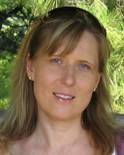
Viktorija Ruškulienė
Once only corrupt government and retired elderly are left, Lithuania's economy will reach the very bottom and push itself up
Once only corrupt government and retired elderly are left, Lithuania's economy will reach the very bottom and push itself up: things will start to change, hopefully for the better. As there will be no one to be robbed, the ex-KGB-today-"democratically"-elected-mob-government will follow the path of their foreign invested funds and retire outside of Lithuania. Hopefully there still will be some Lithuanians willing to return back to their homeland...
Some more realistic politicians suggest to open Lithuanian job market for Belarus young professionals and political refugees, with a promise of European citizenship after 7 years working and paying taxes in Lithuania. This will become some "injection" to keep economy floating at the level it is today, but what will happen if Belarus elects new government and joins EU? Will people from Asia's developing countries be interested in cold climate and hopeless economy refuge?
Lithuania loves money, sent by expatriates, though...
----------------------------------------------------------------------------------------------------------------------
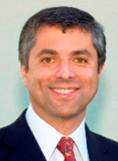
Grant Gochin
Lithuania does NOT love the expatriate community. If the country of Lithuania rejects us, why maintain our Lithuanian identity?
Lithuania does NOT love the expatriate community. Rather, LT does EVERYTHING possible to reject them. Loyalty has to work both ways. The days of the state being a slave-master and the citizens being mindless obedient drones are over.
If the country of Lithuania rejects us, why maintain our Lithuanian identity?
The people have to protest. If nobody does, nothing will improve.
- Bookmark :
- Digg
- del.icio.us
- Stumbleupon
- Redit it
U.S.-Nordic-Baltic cooperation
- Posted by - (28) Comment

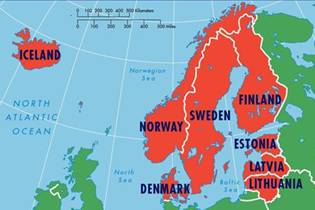
By Dr. Stasys Backaitis
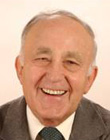 Conference on U.S.-Nordic-Baltic Cooperation:
Conference on U.S.-Nordic-Baltic Cooperation:Shaping the U.S.-European Agenda
The conference provided an overview by U.S. and European researchers and political experts on the importance, need and benefits of a close U.S. collaboration with the Nordic-Baltic region. The collaboration would facilitate building a wider and more secure Europe, reinforcing U.S. attention to transatlantic engagement, and achieving a more constructive dialog with Russia leading to democratization of its society. The conference took place on Friday, May 4, 2012, at The Paul H. Nitze School of Advanced International Studies of the John Hopkins University, Washington, D.C.
The agenda included:
|
Opening remarks. Kurt Volker, Senior Fellow, Center for Transatlantic Relations |
|
|
|
|
|
Panel Discussion |
|
|
|
|
|
Panel Discussion |
|
|
Panel Discussion |
|
|
Concluding Remarks Reception at the Lithuanian Embassy and Remarks by James Townsend, Deputy Assistant Secretary of Defense for European and NATO Policy |
This summary does not intend to deal with every specific issue addressed in this conference. Since many of the issues covered by the speakers and discussers overlapped, it would be of little value to repeat them in this summary on an author to author basis. Rather, the summary is intended to highlight the issues raised and provide the readers the general direction of the topics presented. Details of the issues addressed may be found in the Center for Transatlantic Relations publication entitled “Nordic-Baltic-American Cooperation: Shaping the U.S.-European Agenda”, John Hopkins University, Paul H. Nitze School of Advanced International Studies, May 4, 2012, Kurt Volker and Ieva Kupce, Editors.
Need for more attention towards the relationship between the United States (U.S.) and the democracies of the Nordic- Baltic Region (NB8)
The conference highlighted the need for more attention towards the relationship between the United States (U.S.) and the democracies of the Nordic- Baltic Region. Encompassing Denmark, Estonia, Finland, Iceland, Latvia, Lithuania, Norway and Sweden, the Nordic-Baltic countries (NB8) are remarkable for their economic health, their promotion of democracy, respect for human rights and the rule of law, their contribution to international security and peacekeeping operations beyond their borders, in spite of the on-going economic crisis in the EU. The values and the vision of the NB8 countries to strive and promote these policies make them valuable allies to the United States. In spite of a changing globalized world and shifting power centers, a strong transatlantic link remains indispensable for enhancing common principles and values within the Euro-Atlantic area in general, and particularly valuable and example setting between the U.S. and the NB8.
While there is some disappointment in the U.S. over Europe’s difficulties to cope effectively with the economic crisis and being an effective security partner, the NB8 nations stand out uniquely as a stable, responsible and dynamic region of Europe. The region also shows that democracy still works, that a positive onward vision of the free world is possible, and that there are still important challenges ahead for the transatlantic institutions. The conference explored how the NB8 region and the U.S. can be engaged in and cooperate to shape the broader transatlantic agenda in a positive direction.
The topics in the conference explored the vision the Nordic Baltic countries together with the U.S. might bring to the table and cooperate to shape the broader transatlantic agenda for common good and security. The conference organizers noted that concrete contributions as a result of such cooperation, in line with the EU and the NATO agendas, can be made in a number of areas such as:
- Continue to promote a Europe whole, free and at peace,
- Help aspiring European nations to join the NATO and EU
- Regional integration to attain higher levels of security than could be possible as a disparate collection of individual states and policies
- The relationship with Russia
- Energy and Cyber security
- U.S engagement with Europe
NB8 region has found ways to produce unprecedented security and stability
At a time when a larger part of the Euro-Atlantic community struggles to determine how it should address and resolve its financial and political difficulties, the NB8 region has found ways to produce unprecedented security and stability. Unlike their older EU counterparts, the Nordic and the Baltic countries have shown willingness to reform, to cooperate and to integrate where necessary. Their example of addressing together the arising challenges is a good example to the rest of the EU members on how to solve their current difficulties, leading to a Europe that is whole, free and at peace. .
The Baltic states, Norway and Finland, bordering Russia, have a direct interest and valuable perspective on living with Russia as a neighbor and managing with it security, energy and environmental issues. This provides them a better in-depth understanding and ability to interpret linkages between Russia’s authoritarian system and its external behavior. The NB8 states cannot change Russia on their own, but they can contribute to better formulated and more coherent EU, NATO and U.S. policies toward Russia.
The Baltic states, being particularly energy resources poor, stand out as models for handling complicated and intertwined energy issues with Russia while also reducing their dependency on Russia’s supplies. There is a concerted effort by all NB8 states to move towards integrated energy security by interconnecting their energy generating systems, cooperation in the development of alternative resources, and the construction of a common regional energy market. The region’s move towards greater energy security and sustainability is a good policy model to both the EU and NATO.
In view of the new U.S. Defense Policy Guidance of January 2012, in which the U.S. intends to reduce its military presence in Europe, Washington promised as compensation rotation of U.S. based brigade size forces to Europe to participate in multinational and NATO led training and military exercises. These rotations should be structured to maximize U.S-Nordic-Baltic military engagements including the use of training facilities on both sides of the Atlantic. By the use of trips across the Atlantic, the Nordic-Baltics would leverage state of the art training facilities in the United States and Canada and would enhance their readiness to undertake expeditionary operations throughout the entire NATO nordic region. Active and increasing participation by NB8 in various NATO training operations both at combat and command as well as planning levels, offer to the U.S a value model on the need to sustain a strong transatlantic engagement.
While there can be no security guarantee to the NB8 region without the U.S., there is also no sustainability of a U.S. role in the NorthAtlantic-Baltic and Central European regions without participation and contribution by the Nordic-Baltic countries. The United States needs Europe and thereby NATO, as much as Europe needs the United States as well as NATO. Transatlantic solidarity is essential to support and promote global trade, economic development, security and stability in an increasingly unpredictable world. The interdependence is best reflected in common political objectives, such as to assure a level playing field through unique transatlantic solidarity embodied by NATO. The Alliance’s new focus on partnerships at the Chicago NATO summit is in recognition of global security interdependence.
NATO and EU seem to share similar objectives in energy diversification of supplies, working toward creation of identical infrastructures and interconnectivity, response to emergencies, assistance to third countries , etc. Shale gas has been and will be a game changer in the foreseeable future. It is breaking Russia’s stranglehold on supplies to Europe. Furthermore, the developing interconnectivity of gas and electricity resources and competition in the energy market within the Nordic–Baltic region is diminishing GAZPROM’s power of monopoly. Focusing on diversification of supplies, attaining diminished vulnerability, and building a permanent framework for reduction of short and long term energy security risks are activities bringing greatest added value to energy security. This will be beneficial for both the EU and NATO, because it will make them much stronger in dealing with possible future energy crisis, and projecting stability and sustainability in their respective areas of operation. Effective NB8 cooperation supported by U.S. in the establishment of NATO Energy Security Center of Excellence in Lithuania represents a window of opportunity for attaining these goals.
NB8 countries are leaders in promoting democracy, rule of law, human rights and market based development
The Nordic-Baltic region offers many assets to the transatlantic community. They are leaders in promoting democracy, rule of law, human rights and market based development in Europe and around the world. They are also regarded as honest brokers in many hotspots of the globe. U.S.-Nordic-Baltic cooperation can serve as an important new and stable pillar to the transatlantic community. The shared vision, values, capabilities and collaboration that define the Nordic-Baltics, can be used to reanimate the effort to build a wider and more secure Europe, transatlantic stability, and help to achieve constructive dialog and cooperation with Russia. Such collaboration can also reinforce U.S. commitments to Europe’s regional security requirements and simultaneously drive forward the transatlantic community’s effort to address developing global challenges
During subsequent discussions several comments were made on the futility of the U.S. and EU to accommodate Russia’s adversarial political positions, and continuing human rights and rule of law violations. It was suggested that the West should take a strong and critical stand on these abuses with the Russian government while encouraging and facilitating developments of respect for human rights, rule of law and governance by the people through democratic institutions. While some comments indicated that the U.S. and EU currently are not in a good position to challenge Russia because of critical access to Afghanistan, others noted that Russia needs NATO presence in Afghanistan as means to reduce its vulnerability to Muslim extremism. In this regard the United States and the Nordic-Baltics should leverage their capacities and experience in a way to deepen their engagement with the Russian people and the state. Shared concerns in the Baltic Sea region such as environment protection, maritime safety, land and air transportation, could serve as platforms of common interest. Properly constructed, U.S.and NB8 cooperation could become a positive reinforcement of the insecurities encountered in the EU-U.S. transatlantic partnership. U.S.-Nordic–Baltic cooperation will also be a positive inducement to the U.S. to reinforce its commitment to maintain strong transatlantic ties as means of maintaining stability in the adjoining part of the world with minimal expense and effort.
Stan Backaitis
05/25/12
United Nordic-Baltic region will ensure economic stability and energy security
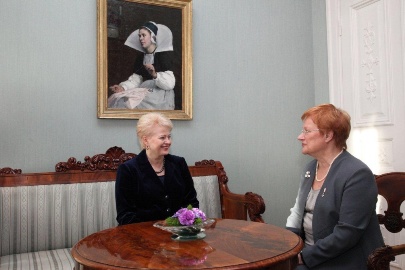
Saturday, October 29, Helsinki - President Dalia Grybauskaitė, currently on a working visit in Helsinki, met with the President of Finland, Tarja Halonen, to discuss Nordic-Baltic cooperation issues, Press Service of the President reports.
This year Finland coordinates the Nordic-Baltic Eight (NB8) cooperation with Lithuania taking over these duties next year. Lithuania and the other Baltic and Nordic countries cooperate actively in advocating the interests of the region in the EU, NATO, OSCE, and other international organizations.
“Joint efforts to strengthen the security of the region’s borders, ensure its economic stability and energy security will help create general well-being and advance progress in the Baltic-Nordic area,” the President said.
The President noted that the deepening of security cooperation was among next year’s top priorities, including border control of the Nordic and Baltic countries, closer interaction on the Baltic Sea environmental issues as well as in cyber and energy security, using to the full extent the possibilities offered by the Vilnius-based Energy Security Center.
The President underlined that the Nordic-Baltic region – one of the most rapidly developing regions in the European Union – was a dynamic driving force to advance economic stability, growth, responsible fiscal policies, innovations, and progress.
The Nordic Baltic region aspires to be among the first to put a single information space and digital market in place for accelerating electronic settlements, information exchange and access to information.
The presidents of Lithuania and Finland emphasized that keeping the Baltic Sea clean and secure for the future generations was a key commitment for all the Baltic Sea rim countries. Specific measures binding for all the nations around the Baltic Sea were set forth at the Baltic Sea Action summit held in Helsinki last year.
Tagged as: Dalia Grybauskaitė, Nordic-Baltic cooperation, Tarja Halonen
JAV-Šiaurės-Baltijos valstybių bendradarbiavimas formuojant JAV-Europos kooperavimo darbotvarkę
Dr. Stasys Backaitis, P.E., SAE Fellow
- Bookmark :
- Digg
- del.icio.us
- Stumbleupon
- Redit it
- Posted by - (0) Comment
Good morning, Mr. President!

There is no head of state in the world, other than former President Adamkus, who has been running 100 meters in 10.8 seconds... This reveals the newly released 400 page sports biography that has been prepared by sports journalist Maryte Marcinkevičiūtė. It is early morning in May 2012. I am here to interview His Excellency, President Valdas Adamkus.
Photo: Aage Myhre.
President Valdas Adamkus interviewed by Aage Myhre
aage.myhre@VilNews.com
Former President Valdas Adamkus welcomes me in his office in the rear wing of the Presidential Palace in Vilnius Old Town this early May morning. We are approaching the end of our series on the relationship between the Lithuanian-American community and the home country, and I have come here to the ex-president's office to learn more about how he, as the world's most famous Lithuanian-American, looks at this relationship. I would also like to hear more about his own history in Lithuania before and during World War II, about his years in Chicago and about his time as a politician and President of Lithuania for most of the years of 1998-2009.
I must admit that I sometimes felt Adamkus was too weak in his job as president. I often wished that he more pronouncedly had called the country's nomenclature to account for their transgressions against the nation's population, and I felt much more should have be done to fight corruption, injustice, intolerance, neglect of society's weaker groups, violence, crime and other misdeeds that Lithuania is still so tragically suffering under.
But after sitting with him for nearly two hours this morning, it slowly dawned on me how impossible it must have been to change attitudes and deeds in a country that to such a high degree had been brainwashed and subjected to almost unbelievable abuses over the years under Soviet tyranny. My respect and understanding of President Adamkus grew significantly during this interview.
Bring Smetona’s remains home to Lithuania!
I start my presidential interview talking about the relationship between the enormous group of Lithuanian-Americans, more than a million people, and their home country here on the Baltic Sea.
President Adamkus was born in this country in 1926 but fled to the West towards the end of World War II and came to America in 1949. During the war he contributed actively to the fight against the Nazi occupiers, and in the United States he committed himself correspondingly as strong in the fight against the Soviet occupiers, until the liberation of Lithuania
finally came in 1990-91, when he could return to continue his efforts for a strong, democratic home country on its own soil.
|
Two of the interwar presidents also fled to the United States during the WWII, Kazys Grinius (1866-1950) and Antanas Smetona (1873-1944). Adamkus was himself spending much time with Grinius in the months before he departed this life in Chicago in 1950, and was probably the one who took the very last photo of the president who led Lithuania over a relatively short period in 1926 until he was deposed by a coup d'état in December that year, on his own birthday. After Grinius' death Adamkus took an active role in giving him a dignified burial in the United States, and was also active when the ex-president's remains were sent to his homeland after the liberation of Lithuania in 1990-91. Grinius now lies buried in an honourable grave in his hometown Selema, near Marijampolė. |
|
|
The pre-war's strong man, President Antanas Smetona, who became president by a military coup in 1926 and stayed in power until the first Soviet occupation of Lithuania, in 1940 also fled to USA. In June of 1940, Smetona had proposed armed resistance against the Soviets, but the majority of the government and the commanders of the army did not concur with this proposal, and Smetona turned over the duties of President to Prime Minister Antanas Merkys, and on 15 June he and his family fled to Germany, and then on to Switzerland without surrendering his powers. In 1941, Smetona emigrated to the United States, and lived in Pittsburgh and Chicago before settling in Cleveland, Ohio in May 1942 with his son Julius' family. Smetona died in a fire at his son's house in Cleveland, on January 9, 1944, and was buried there. In 1975, his remains were moved from Cleveland's Knollwood Cemetery mausoleum to All Souls Cemetery in Chardon, Ohio. We recently brought an article here in VilNews under the title 'No flowers for Smetona', written by our correspondent Frank Passic in Michigan, in which the author claims that the former president's grave is now largely forgotten and enjoys little attention. This gave rise to an intense debate among our Lithuanian-Americans readers, where Passic's allegation was strongly opposed by those who believed that the tomb has not been forgotten.
|
|
It was also raised questions about why Smetona's remains had not been sent home to Lithuania for a similar honourable funeral and burial as was the case for Grinius. The answer given was that Smetona's family did not want this.
“Lithuania still has a long way to go until it achieves the same level of independence and self-determination it had under Smetona. That’s why to repatriate the remains of President Smetona and Sofija Smetoniene will not happen soon if at all,” writes Andris Jonas Dunduras in a comment.
I asked President Adamkus if he had an opinion about this, and he replied simply: "Send the remains back to his home country: It is sad to see that Smetona's family seems to have ended up in an internal conflict instead of thinking about what an important man he was for Lithuania. There is absolutely no reason to doubt Lithuania's safe anchorage in freedom and democracy nowadays and therefore this is not a reason not to provide a dignified burial for Smetona in his beloved homeland."
Adamkus adds that there also are many who believe Smetona was an autocratic president who does not deserve to be honoured by his home country, something he strongly disagrees with. "We must remember that such was the political situation in much of Europe throughout the interwar period. Also our neighbouring countries were led by autocrats, and it is my clear opinion, in such a perspective, that Smetona was a very good president who deserves all possible recognition for his tremendous efforts as a statesman of the highest rank," he says.
|
Then comes a sudden sadness over the President's face. And now it's he who asks me; "You know, in spite of this with Smetona, who of our three presidents from the interwar period I think has got least honour and fame for his efforts and for his incredible sufferings after being deported to a gulag in Siberia?" I nod my head, because I know well the story of Akesandras Stulginskis (1885-1969) who was Lithuania's President in the years 1920-1926, and was taken prisoner by Stalin's henchmen in 1941 at his home in Lithuania and had to suffer through 17 incredibly difficult years in Siberia, first 12 years on the gulag tundra far north, later in a self-built log cabin in Siberia's deep forests. "And not only that," explains Adamkus, "when he finally did come home in 1958 there was a disillusioned and largely destroyed, communist-ruled Lithuania that met him. Until his death 11 years later, in 1969, he was constantly exposed to humiliation and even today there is little attention to this great man of honour. It is even difficult to find his modest, anonymous grave in the Kaunas cemetery where he is buried. When I look back at my time as President, this is something I regret, that I did not do more to honour President Stulginskis with a more dignified tomb."
|
|
Almost caught by Gestapo
President Adamkus gives me more and more new details as the conversation continues. He shares with me episodes from his childhood and youth in Kaunas in the 1930s, and he talks about shocking events from the war years.
In 1944, he was just about arrested by the Gestapo for his anti-Nazi underground work.
"I thank my friend Gabrielius Žemkalnis, brother of Vytautas Landsbergis, that I’m still alive. In the years of World War II, he and I joined the resistance movement for Lithuania's independence, together with Leo Grinius, by publishing and circulating the underground, anti-Nazi newspaper “Jaunime, budek!” (Youth, Be on Guard!) in Kaunas. One day, in 1944, I was suddenly visited by Žemkalnis' sister. She said her brother had been arrested by the Gestapo, but that he had managed to whisper my name to her as he was led out of the apartment. She immediately understood that it was something he and I had together that I had to be warned about. I was still only 17 years old, but realized that this could be extremely serious, so I ran to the woods and hid there for a long time. Žemkalnis himself was first imprisoned in
Kaunas, but was later transferred to German prisons where he sat until the war was over. He never betrayed us in spite of harsh interrogation methods, and his whisper to his sister probably saved my life."

President Adamkus meeting the man who probably saved his life in 1944, Gabrielius Žemkalnis. Regina Narusiene watching.
|
Sport was always important to me In July 1944 Adamkus fled to Germany with his parents. Here he graduated from the Lithuanian Gymnasium and studied at the Faculty of Natural Science at Munich University. In 1949, he came to the United States, where he was employed as a worker in a Chicago factory of car parts, later as a draughtsman in an engineering firm. In 1951, Valdas Adamkus married Alma Nutautaitė. In 1960, he graduated from the Illinois Institute of Technology, with a degree in civil engineering. Both in Germany and in the United States young Adamkus was engaged in various activities. But strangely enough it was not politics that received his attention at first, but sports. He was an active participant and organizer of sports events and won, as an athlete, two gold and two silver medals in track-and-field events at the Olympic Games of the Enslaved Nations of 1948. In 1951, Valdas Adamkus established an academic sports club of Lithuanian Americans, Lituanica. He was chairman of the Organizing Committee of the World Lithuanian Games that were held in 1983. The President gets up from his chair opposite me, this early May morning. He goes out to the anteroom and retrieves a thick book, just published here in Lithuania. The book is about his many accomplishments in sports and organization of sports activities throughout life. He signs the book, gives it to me as a gift, and says: "It was through sport that my political career started, and, as you will see, sport has meant infinitely much to me throughout a long life." |
|
There is no head of state in the world, other than Adamkus, who has been running 100 meters in 10.8 seconds... Says the 400 page sports biography that has been prepared by sports journalist Maryte Marcinkevičiūtė.
Meeting Nixon in the White House, September 1955
While a student, Adamkus, together with other Lithuanian Americans, collected about 40,000 signatures petitioning the United States Government to intervene in the ongoing deportations of Lithuanians to Siberia by the Soviets. The petition was presented to then-Vice President Richard Nixon late September 1955.
The petition was supposed to be delivered directly to President Dwight D. Eisenhower but during a visit to his in-laws in Denver the day before, President Eisenhower suffered a serious, though not ultimately debilitating, heart attack. As it turned out, he would survive the episode by more than 13 years, more than long enough to finish a second term in 1961.
Adamkus also raised concerns about other Soviet activities in occupied Lithuania to United Nations Secretary General Dag Hammarskjöld in 1958 and to President John F. Kennedy in 1962.
“"The reactions from Moscow were uncomfortably strong. No feeling of guilt or regret of the horrible atrocities they were committing against my little country and my people."
President Adamkus' face gets a look of deep sadness as he talks about how his beloved people was torn apart and subjected to atrocities one can hardly imagine today.

In September 1955 Valdas Adamkus (28) presented a petition to then-Vice President Richard Nixon, with
40,000 signatures of young Lithuanian-Americans petitioning the United States Government
to intervene in the ongoing deportations of Lithuanians to Siberia by the Soviets
(Adamkus and VP Nixon in centre)
|
1960-1990 in USA and Lithuania Valdas Adamkus was very active in public and political life of the Lithuanian expatriate community in the U.S. between 1958 and 1965, he was vice-chairman of the Santara-Šviesa (Accord-Light) Cultural-Political Federation, a liberal civic organization of the Lithuanian expatriate community, acting under the slogan "Face to Lithuania ", and, in 1967, he was elected its chairman. While living in the United States, he was an active organizer of protests against Lithuania's occupation. Between 1961 and 1964, he was a member of the Board of the American-Lithuanian Community (LC), vice-chairman of the Centre Board, member of the American-Lithuanian Council (ALC). Starting from 1972, Valdas Adamkus visited Lithuania several times, encouraging and supporting construction of water treatment facilities and development of environmental monitoring. He assisted environmental institutions of the Baltic States with academic literature, equipment and software supply. In the capacity of the coordinator of US aid to the Baltic States in the field of environmental protection, he organized study visits for representatives of Lithuania's academic institutions and helped Vilnius University to get hold of the latest academic literature.
|
|
Early 1990s – presidential campaign with Stasys Lozoraitis
|
|
"One of my best friends through all these years, was Stasys Lozoraitis. When it became weekend he often flew in from Washington to my home in Chicago. We had many long, good conversations, particularly about the situation in Lithuania,” tells Adamkus. Stasys Lozoraitis (1924 in Berlin – 1994 in Washington, D.C.) was a Lithuanian diplomat. He was a son of Stasys Lozoraitis (1898–1983) and brother of Kazys Lozoraitis. In September 1991, following the August Putsch in Moscow and international recognition of independent Lithuania, Lozoraitis resigned the diplomatic service in favour of the national government established in Vilnius. In December 1991, he was appointed as the new government's chief diplomat to the United States, where he re-established the embassy. He was a candidate in the Lithuanian presidential election of February 1993, gathering 38.9% of vote, losing to the former communist leader Algirdas Brazauskas. |
In May 1993, just a few months after the election, Brazauskas recalled Lozoraitis as ambassador to the U.S. despite criticism of politicizing the issue. In late 1993, Lozoraitis was appointed as the ambassador to Italy.
Lozoraitis died of kidney failure at Georgetown University Hospital. He was buried in Putnam Cemetery in Connecticut and was reburied in Petrašiūnai Cemetery in Kaunas in 1999. The same year he was posthumously awarded the Order of the Cross of Vytis.
"I became campaign manager for my friend's presidential campaign on very short notice in 1993," chuckles President Adamkus. "He called me home one day while I still lived in the U.S. and said he needed my help. He had decided to pose as a candidate for the Lithuanian presidential election in February of that year, and had concluded that his Lithuanian team was not capable of running a campaign, thus, he needed my help as soon as possible. I decided quickly to request unpaid leave of absence from my job and travelled across the Atlantic to assist my friend. We realized that the chance to win at such short notice, was minimal, but we took a red marker and divided Lithuania into two, on the map.
Then we started to tour, he in one part, I in the other, to promote him as a presidential candidate, but even more to promote and explain what freedom and democracy could mean for the 'reborn' Lithuania. We won of course not, but I feel that we planted some important seeds that time almost 20 years ago."
Adamkus leans back in his chair, overwhelmed by memories, but shakes his head when I ask him if there might be something in the rumours that Lozoraities was poisoned and murdered in 1994...
President of Lithuania 1998-2003 and 2004-2009
|
|
"I've never really felt that I had the heartfelt support of Vytautas Landsbergis. He was usually lukewarm to my ideas and I saw him not as a genuine supporter neither when Lozoraitis and I worked together as hardest in 1993 or when I four years later started my campaign to become Lithuania's next president." His Excellency seems to struggle a bit to find the right words when I ask him about his relationship with Landsbergis. Searching for the right words to be honest without insulting, define without getting emotional. Nevertheless, in 1998, Valdas Adamkus was elected President of the Republic of Lithuania. He assumed the office on 26 February 1998. As President he very much promoted the idea of rapid modernization of Lithuania and worked consistently towards its implementation. |
In 2002, he ran in the presidential elections for another term, in the second round however he lost to Rolandas Paksas. In 2004, following the removal of Rolandas Paksas from the Office of the President by the Seimas of the Republic of Lithuania, Valdas Adamkus again ran in the presidential elections.
On 27 June 2004, citizens of Lithuania re-elected Valdas Adamkus President of the Republic for another five-year term. During his second term, as President of the Republic, he committed himself to create European wellbeing in every Lithuanian home and guarantee that there should not be a single abandoned person in Lithuania.
Under his presidency, Lithuania actively promoted democracy in the former Soviet, Eastern European and Asian nations. President Adamkus, together with President Aleksander Kwaśniewski, Javier Solana, Boris Gryzlov and Ján Kubiš, served as a mediator during Ukraine's political crisis, when two candidates in the 2004 presidential election, Viktor Yanukovych and Viktor Yushchenko, each claimed victory. President Adamkus recalled in an interview that "when I asked what we could do to help, Kuchma said the friends of the Ukrainian people should drop whatever they were doing and come to Kiev immediately." The next day international mediators met in Ukraine. The crisis was resolved after a new election was held.
|
|
In 2005, Adamkus, refused to participate in the 9th May ‘Victory Day’ celebrations in Moscow. He expressed the view that the war's end, in Lithuania, marked the beginning of a fifty-year Soviet occupation and repression. In response, on 22 July 2005, the United States Congress unanimously passed a resolution that Russia should "issue a clear and unambiguous statement of admission and condemnation of the illegal occupation and annexation by the Soviet Union from 1940 to 1991 of the Baltic countries of Estonia, Latvia, and Lithuania", but Russia refused. U.S. President George W. Bush went to participate in the Moscow event, but came first to Riga to meet President Adamkus and the two other Baltic presidents. “While the end of World War II brought peace, it also brought "occupation and communist oppression," Mr Bush said, apologizing to for the United States’ role in the Yalta Conference in early 1945, where the Baltic states more or less were given as hostages in a superpower play led by despot Josef Stalin.
|
"After I refused to take part in the Moscow parade, I became, in the language of diplomats, "persona non grata" for Putin. I was being ignored; he tried not to see me wherever we both came to participate in any international event,” tells the former leader of Lithuania with a wry smile, as he sits here in front of me this May morning.
President Adamkus supported an active dialogue between European Union member states and those former Soviet republics such as Georgia, Ukraine, and Moldova, that were actively seeking membership in the EU. He expressed support for these candidate members during the Community of Democratic Choice in 2005, at the Vilnius Conference 2006, and on several other occasions.

Adamkus chose not to run for re-election during the Lithuanian presidential election in 2009
and was succeeded on 12 July 2009 by Dalia Grybauskaitė.
Comments about other politicians
We have had a long, good conversation, President Adamkus and me. New visitors have already been long waiting in his anteroom. But before I go I need to know a bit more about how he looks at other leading politicians in today's Lithuania.
|
"I've obviously heard all the stories about him being corrupt and that he represented the nomenclature which ruled Lithuania in the course of the occupation years. But I always had a normal partnership with him, none of the mentioned corruption cases reached some time my president’s office. He was a good farmer, a good building, a pragmatist who people liked. And even though we were far from each other politically, we always had a relationship that was characterized by mutual respect."
|
|
|
"It is true that I was the godfather of his child, but it meant not that we had or have a very close relationship. Still, I must say that Mr. Zuokas has some extraordinary qualities and visions. I disagree with some of his actions and decisions, but I think he is a man of the future."
|
|
|
"I sympathize strongly with PM Kubilius. He has had a" mission impossible" to fight with ever since he took office as head of a government that had to do everything possible to solve the enormous challenges we faced when the financial crisis hit our country so incredibly hard four years ago. Now there will be parliamentary elections in the autumn, and opinion polls suggest that what we are going to be facing is a coalition government without a majority for any party or group. We are still facing major problems, and I sincerely hope that people will understand this while voting and that it will be found solutions that provide continued strength and good development for our country."
|
|
|
"It would not be appropriate for me to sit here and criticize my successor. The only thing I will say is that I occasionally ask myself what has happened to Lithuania's foreign policy. I have, frankly, become more and more confused. I always emphasized that Lithuania’s way is to have closest possible relations with the West, and not wobble in this respect. What I have seen over the past three years, is that one day there seems to be one attitude, while the next day seems to follow a completely different direction. That worries me." "Has the current president asked for advice from you since she took office in July 2009?"
|
|
My time with President Adamkus has come to an end.
Biography
|
|
|
|
|
|
Valdas Adamkus was born into a family of civil servants in Kaunas on 3 November 1926. He studied at the Jonas Jablonskis Elementary School and the Aušra (Dawn) Gymnasium in Kaunas. During World War II, he was involved in the resistance movement for Lithuania 's independence. Valdas Adamkus fled to Germany with his parents in July 1944. After graduation from the Lithuanian Gymnasium in Germany , Valdas Adamkus studied at the Faculty of Natural Science at Munich University. In 1949, Valdas Adamkus came to the United States , where he was employed as a worker in a Chicago factory of car parts, later, as a draughtsman in an engineering firm. In 1960, he graduated from the Illinois Institute of Technology, with a degree in civil engineering. In 1951, Valdas Adamkus married Alma Nutautaitė. |
Professional Career
In early 70's Valdas Adamkus was invited to work for a newly established US federal environmental institution, the US Environment Protection Agency (EPA). He headed the Environment Research Centre and was later appointed deputy administrator at the US EPA Region 5 (Midwest Region). In 1981, he was promoted to administrator of the Environment Protection Agency.
Face to Lithuania
Valdas Adamkus was active in public and political life of the Lithuanian expatriate community. Between 1958 and 1965, he was vice-chairman of the Santara-Šviesa (Accord-Light) Cultural-Political Federation, a liberal civic organization of the Lithuanian expatriate community, acting under the slogan "Face to Lithuania ", and, in 1967, he was elected its chairman.
While living in the United States , Valdas Adamkus was an active organizer of protests against Lithuania 's occupation and the initiator of numerous petitions. Between 1961 and 1964, Adamkus was a member of the Board of the American-Lithuanian Community (LC), vice-chairman of the Centre Board, member of the American-Lithuanian Council (ALC).
Valdas Adamkus was an active participant and organiser of sports events. He won two gold and two silver medals in track-and-field events at the Olympic Games of the Enslaved Nations of 1948. In 1951, Valdas Adamkus established an academic sports club of Lithuanian Americans, Lituanica. He was chairman of the Organizing Committee of the World Lithuanian Games that were held in 1983.
Since 1972, Valdas Adamkus had been visiting Lithuania once or several times a year. Encouraging and supporting construction of water treatment facilities and development of environmental monitoring, Valdas Adamkus assisted environmental institutions of the Baltic States with academic literature, equipment and software supply.
In the capacity of the coordinator of US aid to the Baltic States in the field of environmental protection, Valdas Adamkus organized study visits for representatives of Lithuania 's academic institutions and helped Vilnius University to get hold of the latest academic literature.
In 1993, Valdas Adamkus headed the election campaign of presidential candidate Stasys Lozoraitis in Lithuania .
Consolidating the moderate political centre, he was actively involved in the campaign of the 1996 Lithuanian general parliamentary elections.
President of the Republic
In 1998, Valdas Adamkus was elected President of the Republic of Lithuania. He assumed the office on February 26, 1998. President Adamkus promoted the idea of rapid modernisation of Lithuania and worked consistently towards its implementation.
In 2002, Valdas Adamkus ran in the presidential elections for another term, in the second round however he lost to Rolandas Paksas. Upon completion of his term in the office, Valdas Adamkus remained active in domestic and foreign politics and gave lectures at international conferences.
In 2004, following the removal of Rolandas Paksas from the Office of the President by the Seimas of the Republic of Lithuania, Valdas Adamkus again ran in the presidential elections.
On June 27, 2004, citizens of Lithuania re-elected Valdas Adamkus President of the Republic for another five-year term. During his second term, President of the Republic is committed to create European wellbeing in every Lithuanian home and to guarantee that there is not a single abandoned person in Lithuania .
UNESCO Goodwill Ambassador for the Construction of Knowledge Societies
In 2003, President Valdas Adamkus was conferred the title of UNESCO Goodwill Ambassador for the Construction of Knowledge Societies. This title is held only by 42 individuals in the whole world, therefore, this honour shown to President Valdas Adamkus can certainly be viewed as the award to all the people of Lithuania .
In the area of knowledge society, UNESCO is involved in internet promotion, establishment of community internet centres, library and archive modernisation, development of E-government, implementation of information technologies in educational, women’s and children’s teaching institutions and decision-making structures.
With its own Goodwill Ambassador, Lithuania has now become even more visible among UNESCO member states.
Awards
In 1988, Valdas Adamkus was granted the International Environmental Award for outstanding achievements in the international arena. He has also been awarded the US Environmental Protection Agency’s Gold Medal, the US President’s Award for Outstanding Service and the International Olympic Committee Award.
Valdas Adamkus was named the European of the Year 2007 at the European Voice Awards. In 2008, he was conferred the title of Academician of the Lithuanian Olympic Academy for many years of active involvement in the Olympic movement and the promotion of its ideals.
The President of Lithuania has been bestowed 33 highest-class state decorations of various countries, including the Golden Collar of the City of Athens, the Order of Iron Wolf of the Lithuanian Scouts Union, the Order of Star of the Lithuanian Riflemen’s Union and the International Olympic Committee Award for Sport and Promotion of Olympism.
- Grand Cross of the Order of the Falcon, Iceland, 1998
- Grand Cross of the Order of St. Olav, Norway, 1998
- Order of Yaroslav the Wise, 1st Class, Ukraine, 1998
- Collar of the Order of the Cross of Terra Mariana, Estonia, 1999
- Grand Cross of the Order of the Redeemer, Greece, 1999
- Collar and Grand Cross of the Order of Merit of the Italian Republic, 1999
- Order of the White Eagle, Poland, 1999
- Grand Cross of the Order of Merit, Malta, 1999
- Grand Cross of the Order of Merit, Hungary, 1999
- Grand Cross of the Order of Friendship, Kazakhstan, 2000
- Grand Cross with Collar of the Order of the Three Stars, Latvia, 2001
- Grand Cross of the Order of the Legion of Honour, France, 2001
- Collar of the Star of Romania, Romania, 2001
- St. Mesrob Mashtots Order, Armenia, 2002
- Grand Cross of the Order of the White Rose with Collar, Finland, 2002
- Order “For Special Merits”, Uzbekistan, 2002
- Order of Vytautas the Great with the Golden Collar, Lithuania, 2003.
- Collar and Grand Cross of the Order of the White Star, Estonia, 2004
- Order of Isabella the Catholic with Collar, Kingdom of Spain, 2005
- Special Class of the Grand Cross of the Order of Merit, Germany, 2005
- Order of the White Double Cross, 1st Class, Slovakia, 2005
- Grand Cordon of the Order of Leopold, Kingdom of Belgium, 2006
- Grand Cross with Collar of the Order of Merit of the Republic of Hungary, 2006
- The Most Honorable Order of the Bath, United Kingdom, 2006
- Order for Merit, 1st Class, Ukraine, 2006
- Order “Mother Theresa”, Albania, 2007
- Grand Cordon of the Supreme Order of the Chrysanthemum, Japan, 2007
- Grand Collar of the Order of Infante D. Henrique, Portugal, 2007
- St. George’s Victory Order, Georgia, 2007
- Grand Cross of the Order of the Netherlands Lion, 2008
- Collar of the Order for Merits to Chile, Republic of Chile, 2008
- Grand Star of the Decoration of Honour for Services to the Republic of Austria, Republic of Austria, 2009
- Order of Stara Planina, Republic of Bulgaria, 2009
Honorary Doctor
Valdas Adamkus is the Honorary Doctor of universities in Lithuania and other countries:
- Vilnius University, 1989,
- Indiana St. Joseph's College, USA, 1991,
- Northwestern University, USA, 1994,
- Kaunas Technological University, 1998,
- The Catholic University of America, USA, 1998,
- University of Agriculture of Lithuania , 1999,
- Illinois Institute of Technology, USA, 1999,
- Eurasian University, Kazakhstan, 2000,
- De Paul University in Chicago, USA , 2001,
- Law University of Lithuania , 2001,
- Vytautas Magnus University, 2002,
- Lithuanian Academy of Physical Education, 2004,
- Yerevan State University, Armenia, 2006,
- Baku State University, Azerbaijan, 2006,
- Notre Dame University, USA, 2007,
- Nicolaus Copernicus University in Toruń, Poland, 2007,
- Tallinn University, Estonia, 2008,
- University of Chile, Chile, 2008.
- Bookmark :
- Digg
- del.icio.us
- Stumbleupon
- Redit it
- Posted by - (22) Comment
Juozas Ambrazevicius -
Brazaitis is no hero
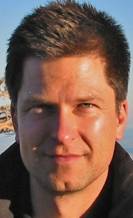 Darius Udrys |
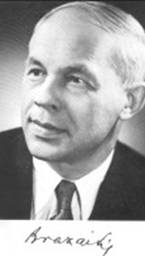 |
Opinion: Darius Udrys
If there’s one thing civilized people should all be able to agree upon, one would think that it would be not to make heroes out of Nazi collaborators. Yet here in Lithuania we are about to witness just such a moral travesty.
Somebody apparently decided it would be a good idea to move the remains of Juozas Ambrazevicius-Brazaitis, acting prime minister of Lithuania during the first months of the Nazi occupation, from the United States to Lithuania. Buried previously in Putnam, Connecticut, he has been exhumed and will be reinterred in Kaunas this Sunday with as much fanfare as can be mustered among the clueless and the callous.
Ambrazevicius-Brazaitis is no hero. As prime minister he took responsibility over the short-lived Provisional Government that sprang up in 1941 as the Germans pushed the Soviets out of Lithuania. That government was formed by an organization in collusion with German authorities from the start—the infamous Lithuanian Activist Front (LAF).
The LAF hoped to take advantage of the German advance to restore some semblance of Lithuanian independence and, as stated in one of its publications, “carry out an immediate and fundamental purging of the Lithuanian nation and its land of Jews.” Lithuania’s own International Commission for the Evaluation of the Crimes of the Nazi and Soviet Occupation Regimes in Lithuania puts it plainly: "The anti-Semitic views of the Provisional Government and the Lithuanian Activist Front are well-documented.”
The Provisional Government (PG) was populated with officials who sympathized with the Nazi worldview. Historian Saulius Suziedelis notes in particular its “public alignment with the Reich” and “its fawning rhetoric of gratitude to Hitler and ‘Greater Germany’.” Even worse: according to Suziedelis, newly discovered protocols of PG cabinet meetings make plain that “while it had no plan to kill the Jews en masse, it was ready to enact anti-Jewish economic measures modeled on the Third Reich's infamous Nuremberg Laws of the 1930s.”
Those Lithuanians who glorify the PG and the anti-Soviet uprising that spawned it go to great lengths to downplay its association with the Nazis. This contributes to a general lack of understanding among ordinary Lithuanians of what went on during that period and who was responsible.
When pressed, PG apologists excuse the Ambrazevicius-Brazaitis government by claiming that it only collaborated with the Nazis pragmatically and for noble reasons (to restore Lithuania’s sovereignty), that not every member of the LAF sympathized with the hard-line views of the Berlin leadership, that the PG “self-disbanded” as soon as it realized it would be no more than a Nazi puppet, and, anyway, there was nothing the PG could have done to prevent the Holocaust. Some have gone so far as to suggest that when the LAF instructed Jews to “get out of Lithuania,” perhaps it was simply warning them to take measures to protect themselves. Needless to say, this flies in the face of copious evidence in the LAF’s own words that its aims were far more sinister.
Whatever the moral casuistry, the bottom line is that there is no reasonable way to decouple the Ambrazevicius-Brazaitis government from the words and deeds of the LAF and the Nazis. The Ambrazevicius-Brazaitis government never publicly distanced itself from the killings of Lithuania’s Jewish citizens and signed off on orders approving their dispossession, isolation, and other measures that facilitated the Holocaust.
All of this notwithstanding, and for reasons impossible to comprehend, the Government of Lithuania as well as the Mayor of Kaunas Andrius Kupcinskas and Archbishop of Kaunas Sigitas Tamkevicius have lent their support to this week’s ill-conceived commemoration of Ambrazevicius-Brazaitis’s legacy. The Government provided 30,000 Litas or about $11,000 in funding for the reburial and the Mayor is head of the organizational committee. Archbishop Tamkevicius had particularly warm words for Ambrazevicius-Brazaitis, who will be reinterred in a place of honor at the Church of the Resurrection of Christ—this from the same ecclesiastical leadership that refused former Lithuanian prime minister Algirdas Brazauskas a Catholic burial because, according to Archbishop Tamkevicius, he showed no remorse for his communist past.
This is not only deeply hurtful and offensive to the families and the memory of the victims of the Holocaust, many of which were rounded up and murdered by LAF activists. To allow this travesty to proceed gravely compromises our country morally and confirms the already widespread perception that Lithuania is unwilling to face its own history honestly and sincerely.
Whether or not one holds Ambrazevicius-Brazaitis responsible for what was perpetrated under his Provisional Government, it does no one a service to hold up as a hero a man who utterly failed the test of a good leader: standing up for what is right and for the innocent.
Someone should have had the wisdom and the courage to say no to the request for public funding and support for this reburial when it was first made. The Government, Mayor of Kaunas and the Catholic Church should cancel and publicly distance themselves from any events resembling a commemoration of Ambrazevicius-Brazaitis’s legacy.
- Bookmark :
- Digg
- del.icio.us
- Stumbleupon
- Redit it
Nazi – not Nazi?
- Posted by - (7) Comment
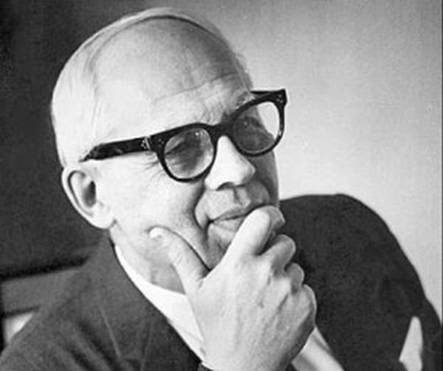
Juozas Ambrazevičius or Juozas Brazaitis
The controversial case of Juozas Ambrazevius Brazaitis' (1903-1974)
remains being returned to Lithuania for re-burial this week
Juozas Ambrazevičius or Juozas Brazaitis was a Lithuanian literary historian, better known for his political career and nationalistic views. He was acting Prime Minister of the Provisional Government of Lithuania, the so-called Nazi puppet government, from 23 June 1941 to 5 August 1941.
He later joined an anti-Nazi movement, until he escaped from Lithuania by the end of WWII.
A document by the US Committee on the Judiciary, House of Representatives, from January 1975, states that Brazaitis was removed from the list of Alleged Nazi War Criminals and that further investigations had been stopped. But Efraim Zuroff, leader of the Simon Wiesenthal Centre in Israel, says: "At the time the Americans didn't have the data that clearly point to his connection to the Nazis and to anti-Jewish violence." Here is a copy of the 1975 document...
Aage Myhre President Adamkus honoured Ambrazevicius-Brazaitis with "Lietuvos didžiojo kunigaikščio Gedimino ordino Didžiojo kryžiaus" (the highest order of the Lithuanian State) on 6 July 2009. This obliges the government to honour him with a State funeral.... Which will take place Sunday 20 May. No ceremony in Vilnius as it has been stated by the Israeli newspaper Haaretz...
Read the Haaretz article here:
http://www.haaretz.com/print-edition/features/glorifying-a-nazi-collaborator-in-lithuania-1.430508

There's a documentary film being released this weekend
about Juozas Ambrazevicius-Brazaitis <> Here's what the producer of the
film says about Brazaitis:
"Gaila, kad tokie žmonės nėra įvertinti visuomenės. Juozas
Ambrazevičius-Brazaitis yra apdovanotas valstybiniais apdovanojimais ir
įvertintas kaip vienas iš svarbiausių kovų už Lietuvos laisvę dalyvių. Bet šio
jausmo nėra mūsų visuomenėje. Jaunimas tiesiog jo nežino, tad pasirinkimas buvo
natūralus. Kitas svarbus dalykas, kad Juozas Ambrazevičius-Brazaitis pagaliau
bus perlaidotas tėvynėje – tai labai svarbus įvykis mūsų istorijoje ir būtų
gėda niekaip neįamžinti šios datos."
rough translation:
"It's a shame the people like him aren't appreciated. Brazaitis was
awarded the nations highest honors, & is appreciated as one of the most
important fighters for Lithuania's freedom. But this feeling is missing in our
society. Todays youth knows nothing about him. Another important thing, his
body will finally be laid to rest in Lithuania, which is a very important event
in our nations history, & would it would be shameful not to immortalize
this date"
(I'm posting this not as a supporter of Brazaitis, which i'm not, but for
everyone to understand why some Lithuanians honor him)
Dokumentinio filmo premjerą pristatantis Saulius Bartkus: tai – šioks toks patriotizmas | 15min.lt
Televizijos laidų prodiuseris Saulius Bartkus, be laidų prodiusavimo, labai domisi istorija ir prieš keletą metų pradėjo kurti dokumentinius filmus.
Lars Persen
This is a huge dilemma for Lithuania. Since the Soviet
opression was both so hard and long quite a few Lithuanians rank the time under
Germany the better, in stead of expressing an equally strong historical
condemnation of both Nazi Germany and communist Soviet. Considering both
sides destruction of Jewish communities in Lithuania and their atrocities, nor
German or Soviet collaborators should be acknowledged! Giving Brazaitas a
post-mortem re-funeral in Lithuania is surprising and sad.
One can in 1941 understand his action, when one takes to account that the German at the time challenged the Soviet occupation. But in retrospect no Nazi collaborator should be honored, no matter what his intentions were!
Linas Johansonas Lars
Persen wrote: "One can in 1941
understand his action, when one takes to account that the German at the time
challenged the Soviet occupation. But in retrospect no Nazi collaborator should
be honored, no matter what his intentions were!"
Shouldn't the same apply to those who collaborated with the Russians?
Aurelijus Baltušis
Extracts
from a Report by Einsatzgruppe a in the Baltic Countries:
“It was no less important to establish as unshakable and provable facts for the
future that it was the liberated population itself which took the most severe
measures, on its own initiative, against the Bolshevik and Jewish enemy,
without any German instructions being evident.
In Lithuania this was achieved for the first time by activating the partisans**
in Kovno. To our surprise it was not easy at first to set any large-scale
anti-Jewish pogrom in motion there.
Klimatis, the leader of the partisan group referred to above, who was the first
to be recruited for this purpose, succeeded in starting a pogrom with the aid
of instructions given him by a small advance detachment operating in Kovno, in
such a way that no German orders or instructions could be observed by
outsiders.[...]
Both in Kovno and in Riga evidence was taken on film and by photographs to
establish, as far as possible, that the first spontaneous executions of Jews
and Communists were carried out by Lithuanians and Latvians.”
http://www.jewishvirtuallibrary.org/jsource/Holocaust/Einsatz_Baltic.htm
Darius Udrys Since when do civilized countries make heroes out of Nazi collaborators? Brazaitis failed the most important test of a good leader: to protect the innocent and stand up for what is right. This adulation is an instance of staggering moral imbecility.
- Bookmark :
- Digg
- del.icio.us
- Stumbleupon
- Redit it
Should there be gay parades in Lithuania?
- Posted by - (2) Comment

In 2010 the Lithuanian Attorney General's Office insisted security was the only reason it had asked the court to annul a license for what would have been Lithuania's first gay pride march in Vilnius. "Whose fault would it be if anyone gets hurt? It might look like we are homophobic, but I am not sure if we'd look better with pictures of violence on TV," Attorney General Raimundas Petrauskas said. He believed radical and violent groups are organizing protests and provocations against the participants of the gay march.
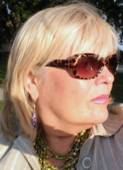 Irene Simanavicius, Toronto, Canada |
Today homosexuality is discussed everywhere we go. It is shown through the television, movies, and books. Being a Homosexual in today’s society comes with many hardships. Although it has been more frequently discussed and talked about, there is always discrimination. Types of discrimination towards someone’s sexual preference are name-calling, hate crimes, firing from a job, violence, murders, and vandalism of property. Unfortunately, when you are not part of the norm you are picked on and discriminated against. Homosexuality is becoming a more common and open thing but it still has people disagreeing with its moral values. Homosexuality has many issues that It has to face in the future. As a society today, we will have an open mind to homosexuality but there will always be discrimination by someone, somewhere. |
Irene Simanavicius ~ There has been a lot of activity for the last forty years with what has been called the “Gay Revolution”. It has been going on since 1960’s to sustain drive for gay rights, and seek to end discrimination against homosexuality originated in employment, credit, housing, public accommodations and other areas of life. This led to the start of Gay Pride Week that takes place in late June. Gay Pride Week is an annual Celebration of the “Stone Wall” or “Christopher Street” riots. These celebrations and demonstrations began in an atmosphere created by young people especially in college. Homosexuality began to be viewed as “unnatural”. By the end of the 19th century, medicine and psychiatry were competing with religion and law over sexuality. It started to be seen as a crime and a sin. Today homosexuality is look as both right and wrong. There are ongoing debates on the highly controversial issue. I was so pleased to see that this was a topic that was discussed in VilNews and jumped at the opportunity to cheer this on. Living in North America we are all trying to be become tolerant of all of the diversity that surrounds us on a daily basis.
Homosexuality has become a very big part of today’s society. It effects a lot of people especially friends and family of a homosexual. Unfortunately, many families disown their own sons or daughters that are homosexual. Most of this happens because they are afraid, they don’t have enough information, or they are angered or too shocked to think rationally. Sometimes one parent will be all right with their child’s’ choice while the other can’t accept it.
Many friends of homosexuals are often confused about the situation and have many questions. Some examples of questions are: If you spend a lot of time with a gay person will you become gay? How did they become gay? If my brother is gay, will I become gay? Questions that seem really easy to answer are serious if you were put in a situation with no information.
Today homosexuality is discussed everywhere we go. It is shown through the television, movies, and books. Being a Homosexual in today’s society comes with many hardships. Although it has been more frequently discussed and talked about, there is always discrimination. Types of discrimination towards someone’s sexual preference are name-calling, hate crimes, firing from a job, violence, murders, and vandalism of property. Unfortunately, when you are not part of the norm you are picked on and discriminated against. Homosexuality is becoming a more common and open thing but it still has people disagreeing with its moral values. Homosexuality has many issues that it has to face in the future. As a society today, we will have an open mind to homosexuality but there will always be discrimination by someone, somewhere.
Homosexuality will never be a comfortable issue to talk about but we can help make a difference in their lives by supporting them as we would any individual.
But I digress…The comments were on going in the article, and it was quite evident we were quite divided. Due to the difference of opinions and language barriers between some of the contributors of this very heated debate, we were starting to become intolerant of one another. Opinions and ideas were getting misinterpreted, people were getting upset, we had some of us insulting one another due to the perimeters of which we were able to share our strong feelings and opinions that it became quite apparent that we would have to shelve this for awhile or like we say here in North America TIME OUT!!!
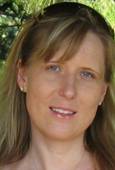 Viktorija Ruškulienė, New Jersey, USA |
“Lithuania has a great distance to walk towards democracy. Cases presented to court cannot be used as a statistical data, as the Lithuanian judicial system is corrupt and not working in many cases, people do not resolve their problems by law, as it’s done in other European countries. For example, police will not assist street or domestic violence incident until a murder or serious injuries take place. The rape victim has to have two witnesses of the “rape in action”, otherwise the case will be dismissed (my friend was in this unfortunate situation: raped by a policeman and had no witnesses).She was told that case will never reach the court.” |
A wonderful thing occurred; a lovely woman from Lithuania and now lives and works in the USA by the name of Viktorija Ruškulienė popped up and had this to write on Facebook:
The roots of today’s gay right issue lies in the democracy of western civilization, which evolved to the level, where discrimination based on medieval religious dogmas are not tolerated anymore. In Lithuania only two centuries ago pregnant women were labeled “dirty” and were not allowed to attend churches (the main social gathering of that time). Only in 20th century women received the rights to own property, seek education and have competitive careers. And now the time came for homosexuals to have equal rights with heterosexuals in seeking happiness through marriage and family, not to be discriminated by employers and feel safe to live openly in local communities. There are more social issues to be resolved in Lithuania: women and child abuse, bullying in schools, sexual harassment in work place, employment discrimination, corruption in government and judicial systems, etc.
Lithuania has a great distance to walk towards democracy. Cases presented to court cannot be used as a statistical data, as the Lithuanian judicial system is corrupt and not working in many cases, people do not resolve their problems by law, as it’s done in other European countries. For example, police will not assist street or domestic violence incident until a murder or serious injuries take place. The rape victim has to have two witnesses of the “rape in action”, otherwise the case will be dismissed (my friend was in this unfortunate situation: raped by a policeman and had no witnesses).She was told that case will never reach the court. My friend hoped that her complaint on file will help future victims, but the complaint and medical exam results were delivered the very next day to the rapist, who threatened whole family of the victim and forced her to withdraw the complaint.
The roots of today gay right issue lay in democracy of western civilization, which evolved to the level, where discrimination based on medieval religious dogmas is not tolerated anymore. In Lithuania only two centuries ago pregnant women were labeled “dirty” and were not allowed to attend churches – the main social gathering of that time. Only in 20th century women got rights to own property, seek education and have competitive careers. And now the time came for homosexuals to have equal rights with heterosexuals in seeking happiness through marriage and family, not to be discriminated by employers and feel safe to live openly in local communities. There are more social issues to be resolved in Lithuania: child and woman abuse, bullying in schools, sexual harassment in work place, employment discrimination, corruption in government and judicial systems, etc. Lithuania has a great distance to walk towards democracy.
Cases presented in court cannot be used as a statistical data, as the Lithuanian judicial system is corrupt and not working in many cases, people do not resolve their problems by law, as it’s done in other European countries. For example, police will not assist street or domestic violence incident until murder or serious injuries take place. The rape victim has to have two witnesses of the “rape in action”, otherwise the case will be dismissed (my friend was in this unfortunate situation): raped by a policeman and had no witnesses. She was told that case will never reach the courts. My friend hoped that her complaint would stay on file that will help future victims, but the complaint and medical exam results were delivered the very next day to the rapist, who threatened the whole family of the victim and forced her to withdraw the complaint.
Everybody knows about how purposely “tangled” and “irresolvable” the case of a little girl, abused by pedophiles… We cannot skip steps in our path to democracy, if we want our children to live in a civilized society.
For me, all this homophobia and so called "rightful" and "pure" marriage definition is so absurd. If I had one child homosexual, one heterosexual, the third transgendered, and fourth one - frigid, would I support only one child in his/hers pursue of happiness? And which one would I need to choose? And who would determine that? Ruling political party? The church? The neighbors?
Lithuanians have lived under oppression for 50 years under the Soviet fist, and now people are rising in their pursuit to create civil democratic society. I'm happy to see how many Lithuanian citizens came to protect the little girl, abused by pedophiles and tormented by the Lithuanian judicial system. These people didn’t have similar situations in their family, but they united in defense of an unjustly system.
As long as only minority people alone defend their rights, the situation will not improve; majority shall protect any unjust treatment of other citizens. Someone here mentioned high suicide statistics in Lithuania. To be more precise: male suicide is the highest in Europe, and the roots of it lay in the sexist mentality.
In Lithuania there is stereotype of a “real man” prevailing, which puts lots of pressure on the man: he is the achiever, family provider, physically strong heterosexual male. In real life and present economically difficult situation very few men belong to this category. Every man at one or another in his life will fail this definition. The “real man” or “real woman” or “real marriage” concepts are understood differently by various individuals and social or religious groups. And when these concepts are forced on not conforming individual, they destroy a person’s self-esteem; it will make this person retreat and live “closeted” life, often lead suppressed person to suicide.
Lithuania is making leaps, not small steps in adopting and implementing EU Constitution and entering EU economical zone. This has consequences: local economy and society are not always ready for big adjustments. Lithuania is very small country and it does not follow US as a model, so all these comparisons to US democracy are only brought here to our attention because this is what we know the best. US build its democracy towards economical and military world leadership. US does not have problems like low birth rate and dying/emigrating nation, post Communism economy, post genocide and suppression mentality. "National heritage" and "National language" in US have totally opposite meaning of what it is in Lithuania.
A lot of Lithuanians do not want to accept the “Gay Issue” issue not due to hate or intolerance of different lifestyle. People think that pressuring gay population into heterosexual behavior it will help to recover our disappearing nation. They believe that this is a moral issue, that heterosexuality could be taught to children and accepted by influencing a person. I disagree as well, but when I talk to people in Lithuania, that's what most of them say, even medical doctors with decades of work experience think they can force everyone into heterosexuality.
The younger generation in Lithuania’s bigger cities is very promising; they have attitudes similar to any western European youth. Of course there are some hate and bullies, who are ready to attack a man with long hair or someone openly showing gay behavior, but this happens in rural areas, where differences are not tolerated. Gay parade happens in Vilnius.
I myself admire village culture, but this is universal: big cities shelter people with broader spectrum of cultural differences. My classmate from Vilnius Technical University, skinny guy with long hair, when went to visit his parents in rural area near Panevėžys, had to run all the way from bus station to his parent's house, since bullies were just waiting to get him, beat him and cut his hair.
Rural culture tends to separate itself from the city, they think: "oh, this is spoiled city problem, we don't have this", nevertheless village culture preserves tolerant, true to nature and human roots mentality, which city culture lacks.
An example from my personal experience: special needs child from the city by everyone was labeled as "challenging", in need of special treatment and help, requiring stretch of tolerance; while visiting rural area the same child was accepted as normal and treated with no difference, other kids were happy to adjust and tried different ways to communicate with the newcomer. When finally I couldn’t help myself but bring this issue up to someone’s attention, it was explained to me: "We have different kids born and we love them all, they all have different ways to be normal when they grow up". Go figure :)))
I know many good families with good intentions and they cannot tolerate gay behavior, just because they lack understanding.
Sex with intention of reproducing is lesser sin than sex which leads only to satisfaction (medieval thinking). Good families torment their own children who are born different. Once a gay marriage and adoption is legal and commonly practiced, parents will accept their gay children with greater ease.
Parents add pressure to their adult children into getting married and having children, this is acceptable and normal, and if someone due to health issue cannot reproduce - it's forgiven, but if someone does not reproduce because that's their choice - "more pressure should solve it". Will this formula work with a gay couple? If gay marriages and adoptions are legal, why not?
- Bookmark :
- Digg
- del.icio.us
- Stumbleupon
- Redit it
Global Baltic ‘family reunion’ in Chicago
- Posted by - (0) Comment

U.S. Senator Dick Durbin, who traces his roots to Lithuania, spoke on the
topic of “the unbreakable U.S.-Baltic partnership,” and referred to
the conference as “a family reunion.”
Photo: Jurgis Anysas.
By Ellen Cassedy
“The Global Baltics: The Next Twenty Years” was the subject of the 23rd biennial conference of the Association for the Advancement of Baltic Studies (AABS). The conference took place April 26-28 at the University of Illinois at Chicago.
“We are truly the global Baltics,” said Robert Vitas, chair of the Chicago-based Lithuanian Research and Studies Center, in an opening address. “Wars, migrations, and deportations have wrenched our people beyond our national boundaries. Lithuania is home in our hearts, but the countries of the diaspora are also home.”
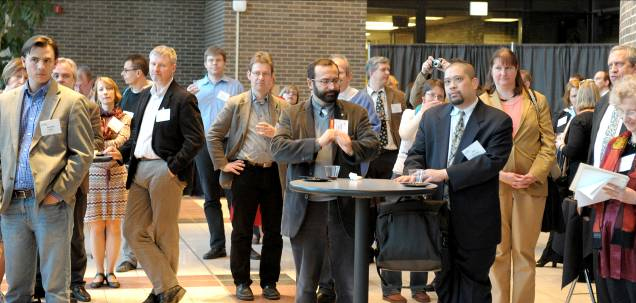
More than 200 scholars from 15 countries participated, including some from as far away as Japan and Brazil. Scholars in the field of Lithuanian studies made up about one-quarter of the participants.
Sixty speeches, roundtables, and panel discussions explored Baltic history, literature, linguistics, political science, aesthetics, culture, sociology, psychology, economics, gender, anthropology, musicology, environment, education, and public health.
Numerous members of Chicago’s Baltic-American community turned out for the opening session, which was addressed by the three Baltic ambassadors to the U.S. and two White House representatives.
U.S. Senator Dick Durbin, who traces his roots to Lithuania, spoke on the topic of “the unbreakable U.S.-Baltic partnership,” and referred to the conference as “a family reunion.”
Ever since its beginnings in 1968, according to Bradley Woodworth of the University of New Haven, AABS has striven to maintain strong ties with the émigré communities. “We foster a high level of scholarship,” he said, “but we also want to reflect a deep emotional tie” with the Baltics.
Not only the Baltic nations themselves but the Baltic émigré communities were under discussion.
Some presentations focused on the home countries – for example, the Estonian contribution to digital music, Baltic linguistics in Renaissance Europe, the Latvian SS Voluntary Legion, Soviet art in Lithuania, and Poles in contemporary Klaipeda.
But others focused on such topics as whether the mission of early Lithuanian immigrants to the U.S. was to preserve or to create Lithuanian identity; the meaning of “Lithuanian-ness” outside Lithuania; and the state of Baltic archives and libraries in North America.
Past president Guntis Smidchens, of the University of Washington, recalled that from the very beginnings of the association in 1968, AABS conferences have served as a valuable place for Baltic scholars to share research and seek critiques of their papers. To begin with, “you didn’t need to show where the Baltics were on the map,” he said. “Everyone knew.”
Today, Smidchens said, the conferences are changing, as scholars from the Baltic countries themselves are able to attend, and Baltic studies are on the rise in Europe. At the same time, he voiced disappointment that Baltic language courses are being eliminated at U.S. universities.
Woodworth emphasized that for him, Baltic studies means an exploration of all the peoples who live in the Baltic lands. “The emphasis on Estonia, Latvia, and Lithuania as nation-states has been a real strength,” he said, “but that can go too far. I study the people who live in a certain region, not ethnicities per se. This is not a place for Baltic nationalism.”
Scholars of all three Baltic countries not only joined together in formal discussions but chatted at the coffee urns.
Did the conference create a “pan-Baltic” spirit– a sense of fellow-feeling among Estonians, Latvians, and Lithuanians across national boundaries? Some participants said they felt it, while others did not.
The conference was not all work. Participants perused the exhibits of books and journals and explored the lavish display of artifacts and manuscripts mounted by the Lithuanian Research and Studies Center. In a session chaired by Violeta Kelertas, of the University of Washington, Baltic fiction writers from the U.S. and Canada entertained the participants by reading from their short stories and novels. A Latvian and a Lithuanian men’s choir serenaded the gathering. There was a dinner and a play performance. And conference chair Giedrius Subacius, of the University of Illinois at Chicago, was feted with a rousing Lithuanian birthday song.
The next AABS conference, to be held jointly with the Society for the Advancement of Scandinavian Studies, will take place at Yale University, March 13-15, 2014. Some travel stipends will be offered. Two “sister’ conferences are also in the works. For more information: http://depts.washington.edu/aabs/.
 |
Ellen Cassedy traces her Jewish family roots to Rokiskis and Siauliai. Her new book, We Are Here: Memories of the Lithuanian Holocaust, was published in March and will appear in Lithuanian in May. She lives in Washington, D.C. Visit her website at www.ellencassedy.com. |
- Bookmark :
- Digg
- del.icio.us
- Stumbleupon
- Redit it
- Posted by - (0) Comment
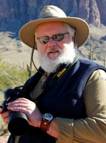
Rimgaudas "Rim"
Vidziunas
“The LT government didn’t call to say they love me.”
This was the headline of an article we brought earlier this week, about Rimgaudas "Rim" Vidziunas in Arizona, USA. Rim and many other American-Lithuanians have been doing much to keep the memory of Lithuania alive. When I asked if he ever heard from the Lithuanian authorities, he told me that no one from the homeland had ever told him or other refugee children that they are loved by the ancestral homeland, that they are welcome back now that the communism yoke is lifted off.
It seems, unfortunately, that today’s Lithuanian leadership has not done much to restore contact with this most valuable of all resources, namely its own people around the globe – the diasporas.
And even worse is that when these 'refugee children' are trying to make contact with Lithuanian leaders themselves, they will very often not even receive replies.
Sadness pit dug even deeper.
Here a couple of emails we received some time ago, from two American-Lithuanians born in their home country before the war:
____________________________________________________________________
Sending e-mail to LT is
like sending it to the black
hole of the universe
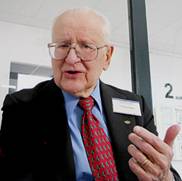
Vytautas Sliupas
Dear Aage:
Lithuania's business people and government officials are yet to learn the necessity of good communications. Without a two way communication there is no possibility for further contacts. One of the most frustrating experiences I had was in e-mail (before that it was in regular "snail mail") communications. I would write and write but receive no reply (with only a few exceptions).
When I was working, our management had a rule - "answer all letters received in not more than three days. If there is no answer to be given, than at least acknowledge the receipt".
One of my American colleagues, who was sincerely trying to help Lithuania, said "Sending e-mail to Lithuania is like sending it to the black hole of the universe. Everything goes one way and nothing comes back".
No wander he is now disenchanted and helping others.
Vytautas Sliupas, P.E.
www.aukfoundation.org
Burlingame, California
____________________________________________________________________
"Dummheit und Stolz
wachsen auf einem Holz"
(Pride and ignorance are akin)
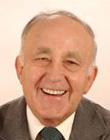
Stan Backaitis
Dear Aage,
Several months ago I had arranged a visit between the minister of energy and a CEO of an important nuclear reactor manufacturer. The meeting was supposed to be for the benefit of the minister on information of what is forthcoming in the future, particularly in small reactors and the possibility of establishing a European affiliate of the company in Lithuania.
The minister graciously extended an invitation to the CEO, but the minister's secretariat refused to extend even the slightest courtesy to this visit, such as picking up the visitor from the airport and transporting him to the meeting, setting up a meeting agenda, or even providing to the visitor's office the address of the ministry. They claimed that this was just another sales visit, and the visitor should take care of everything on his own. As a result the CEO canceled the meeting and eventually went to London. The European affiliate was established in the UK. Thus through such arrogance another opportunity was lost.
There is a lot truth in the German proverb "Dummheit und Stolz wachsen auf einem Holz".
Best regards,
Stan Backaitis
Washington, USA
- Bookmark :
- Digg
- del.icio.us
- Stumbleupon
- Redit it
As vast as the waves of Lithuanian immigrants who crossed the ocean to start new lives thousands of miles from their native land
- Posted by - (0) Comment
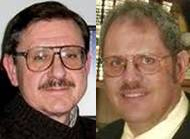
Boris Vytautas Bakunas (left)
has much good to say about
Frank Passic’s “Chicago
article” here in VilNews
Dear Mr. Frank Passic,
How can I thank you for your article How Chicago Became Lithuania’s Second Capital?
Its scope is as vast as the waves of Lithuanian immigrants who crossed the ocean to start new lives thousands of miles from their native land. .
Until I read your article, I didn’t know that Bridgeport, the Chicago neighborhood, where I spend the happiest years of my childhood, is said to have gotten its name from Ansas Portas, who owned land on the south side of the Chicago River.
Nor did I know of the 18 men who were the first Lithuanians to set foot on Chicago as part of a railway crew. I can easily imagine the grime on their faces and their calloused hands as they trudged home to their families after toiling all day in the railroad yards.
Nor was I aware of the small token “chips” that struggling Lithuanian societies issued in order to raise meager sums to support the building of their cultural institutions. Those meager sums added up and helped pay for the bricks that built institutions where Lithuanians gathered to preserve their customs and worship in their native tongue.
Your article is a source of inspiration for all Lithuanians and their descendants. It shows how fiercely Lithuanian immigrants fought to preserve their cultural heritage. With little money but with great determination, they established organizations, published Lithuanian newspapers, built churches, schools, and centers of culture.
They worked in sweat shops and labored in the Chicago Stock Yards. They fought beside their fellow workers to unionize the Meat Packing Industry.
My gratitude extends far beyond the historical knowledge you conveyed.
The words you wrote and the photographs you posted stirred my memory. My my mind flooded with names and stories of Lithuanians who fled their native soil to escape exile, execution, or torture in 1944.
The sky is gray and overcast in Chicago as I write. Why do I feel it should be raining? Do I want the rains to come and wash away those memories of misery and pain?
My mother and grandparents rarely talked about the Second World War and its aftermath. The questions my half-sister and I asked were often met with curt answers like “Those were terrible times.”
But we kept asking, and over the years, when family and friends had gathered together to celebrate holidays, we snatched bits and pieces of conversations that helped us form a mosaic of the hidden past.
I remember how fortunate my grandparents and mother said they felt to have caught the last train leaving Lithuania in August of 1944.
I remember hearing how the train, carrying both troops and civilians, was strafed by a fighter plane. The train screeched to a halt. People rushed from the railway cars and scattered to hide in the fields.
When the strafing ended, my mother turned to her side and saw that the body of a German soldier beside her -- his body sliced in two by bullets. He was one of several who had tried to shield her with their own bodies.
I remember being told that my mother screamed hysterically for nearly an hour. . Then she fell silent and did not whisper a word for a month.
I remember my godmother telling me how she and her husband fled their home when they heard the roar of Soviet cannons. They rushed to a neighbor’s house. They handed their infant daughter to the woman who lived in the house. “We will hide in the woods. When the front passes, we will come back for her.”
But the battle intensified. The bomb blasts grew louder, pushing my godparents further and further from home. More than thirty years had to pass before mother and daughter were reunited again.
I have no memories of the displaced person’s camp in Germany where I was born. But I remember being told that an American soldier, a Black G.I., lifted me in his arms and gave me chocolate. My mother laughed as she told me how I asked if he was made of chocolate.
I remember Ponia Aldona Konciene, an enormous woman with a heart as big as her bulk. She and her husband were among the first from our D. P. camp to come to America. Despite their poverty, they sponsored dozens of other Lithuanians, often sharing their small apartment with them for weeks at a time.
I remember the actor Alfonsas Brinka and the heavy load he had to bear to support his family at a backbreaking menial job. Yet he always found time to amuse children with his stories, both in person and on the Lithuanian radio show “Margutis.”
I remember the poet Apolinaras Bagdonas. He worked as a desk clerk in a hotel during the week, and taught at the Lithuanian Saturday school I attended. A man of extraordinary gentleness, he didn’t have the heart to yell or punish us when we misbehaved. He would only pause with a look of sadness on his face. On Friday evenings, he’d host gatherings for us and sit quietly as we talked about sports, The war in Vietnam, and our hopes for the future.
The Saturday sky is still gray, but the rain has not come. Names, faces, images flood my mind. I am glad that the rains have not washed my memories away.
Mr. Passic, thank you again.
Dr. Boris Vytautas Bakunas
- Bookmark :
- Digg
- del.icio.us
- Stumbleupon
- Redit it
VilNews e-magazine is published in Vilnius, Lithuania. Editor-in-Chief: Mr. Aage Myhre. Inquires to the editors: editor@VilNews.com.
Code of Ethics: See Section 2 – about VilNews. VilNews is not responsible for content on external links/web pages.
HOW TO ADVERTISE IN VILNEWS.
All content is copyrighted © 2011. UAB ‘VilNews’.

 Click on the buttons to open and read each of VilNews' 18 sub-sections
Click on the buttons to open and read each of VilNews' 18 sub-sections 





































































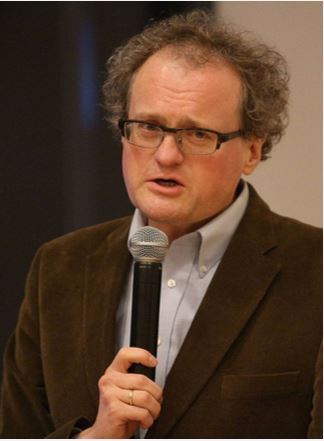
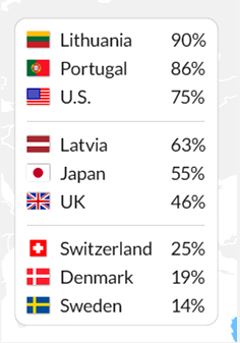
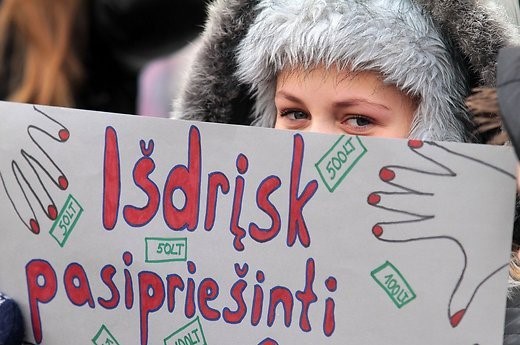


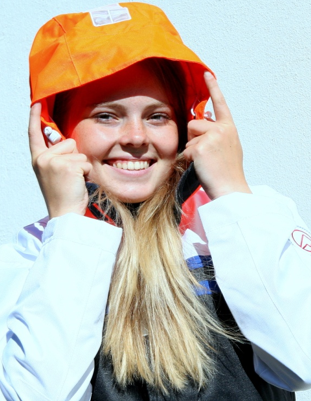
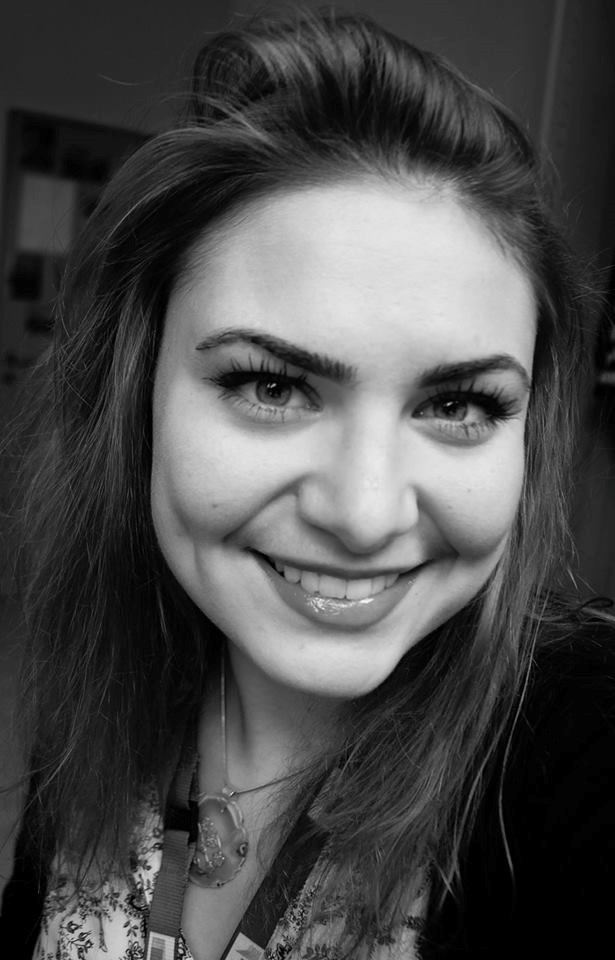
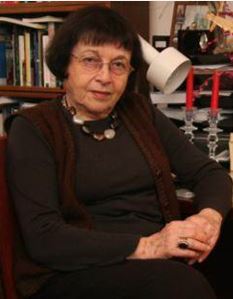
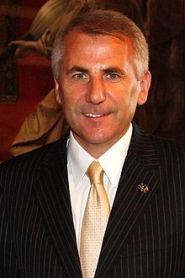
.jpg)
